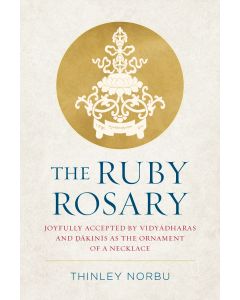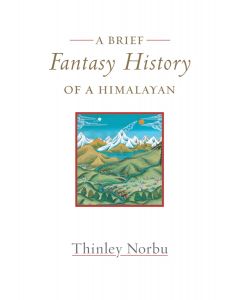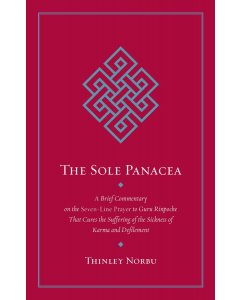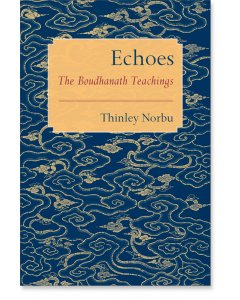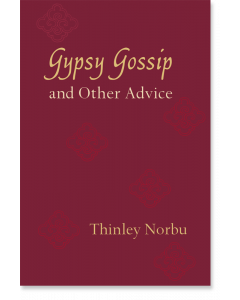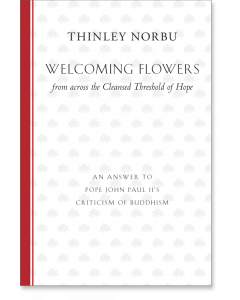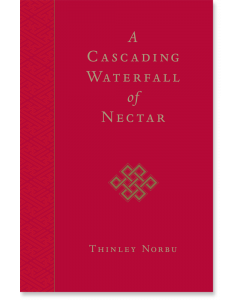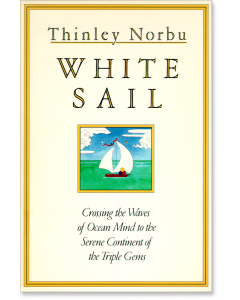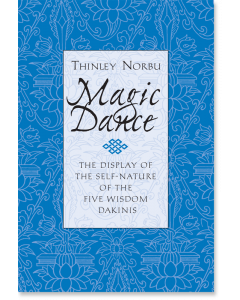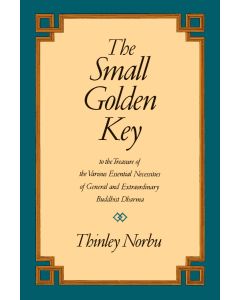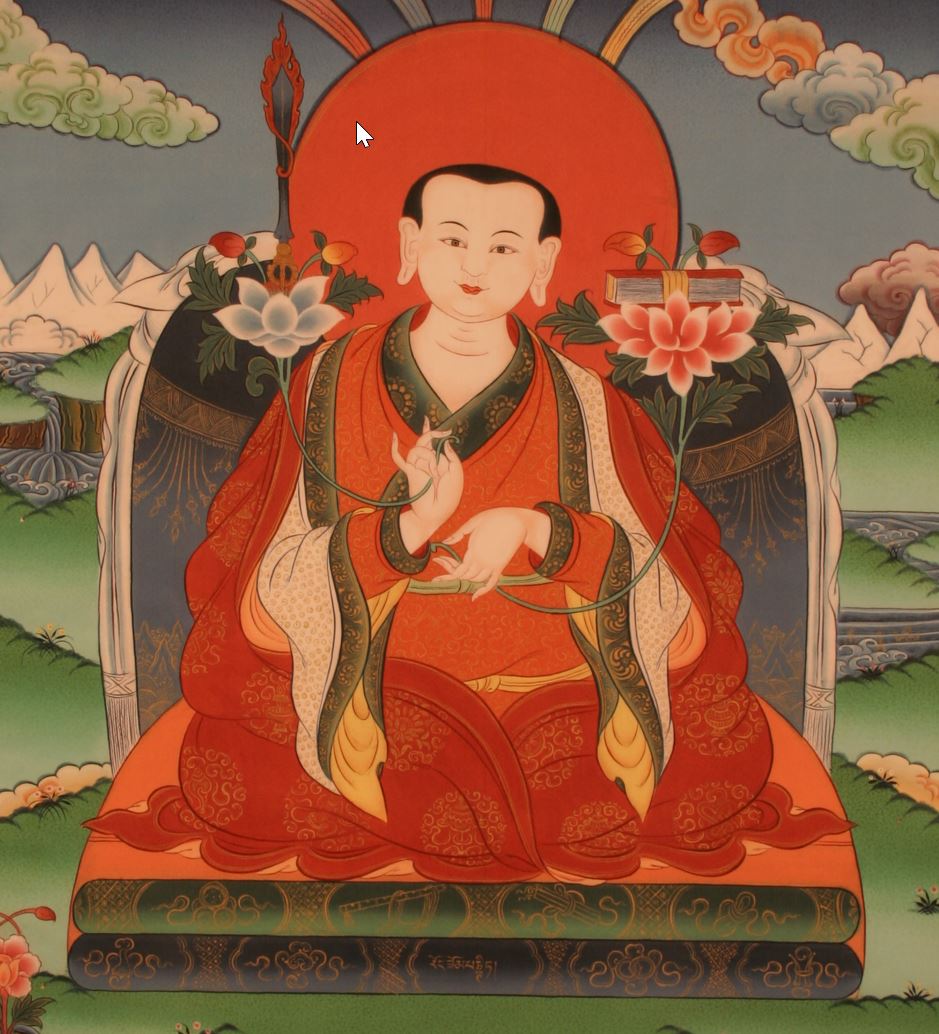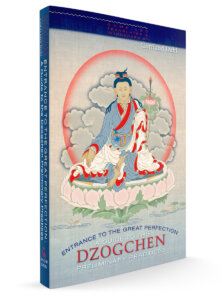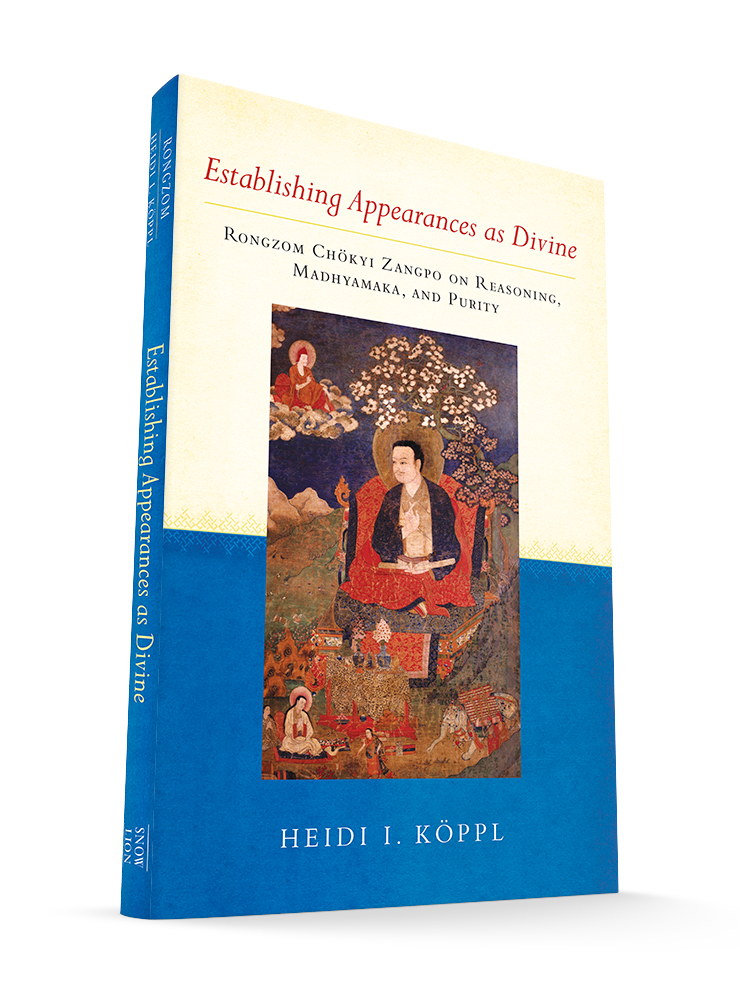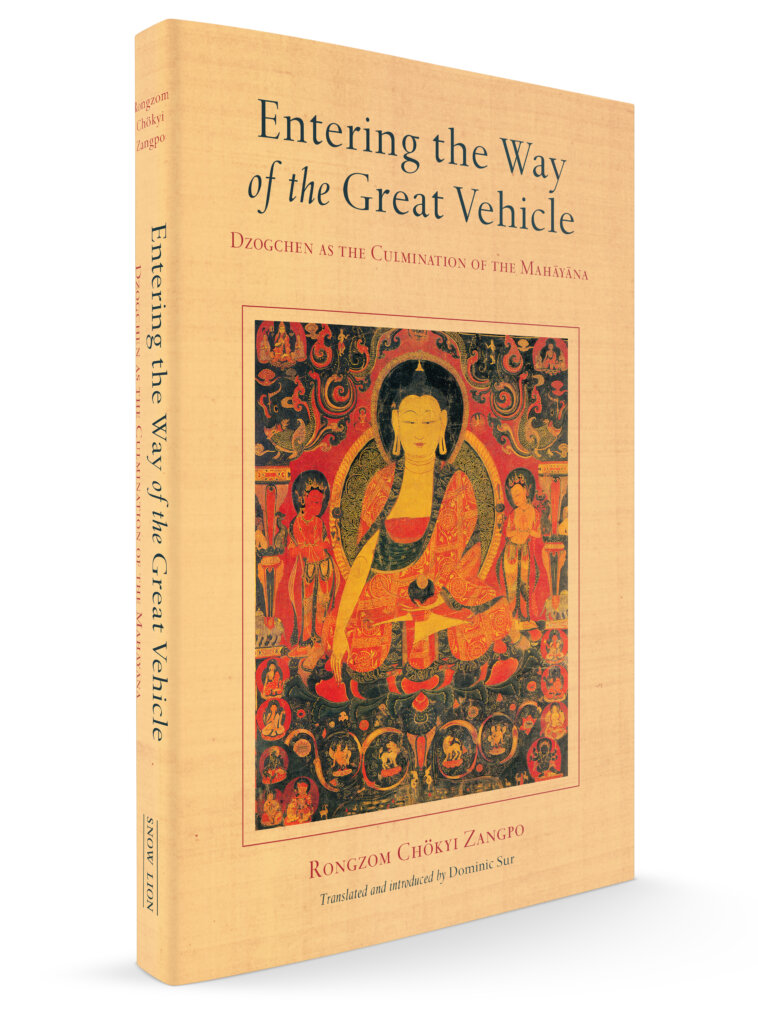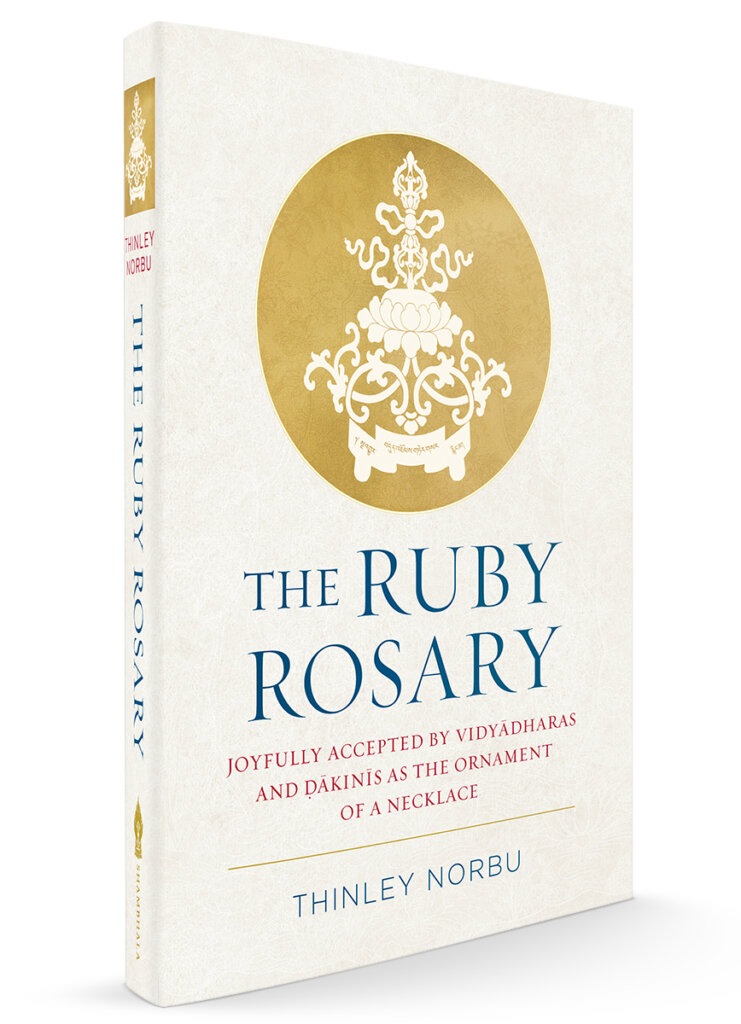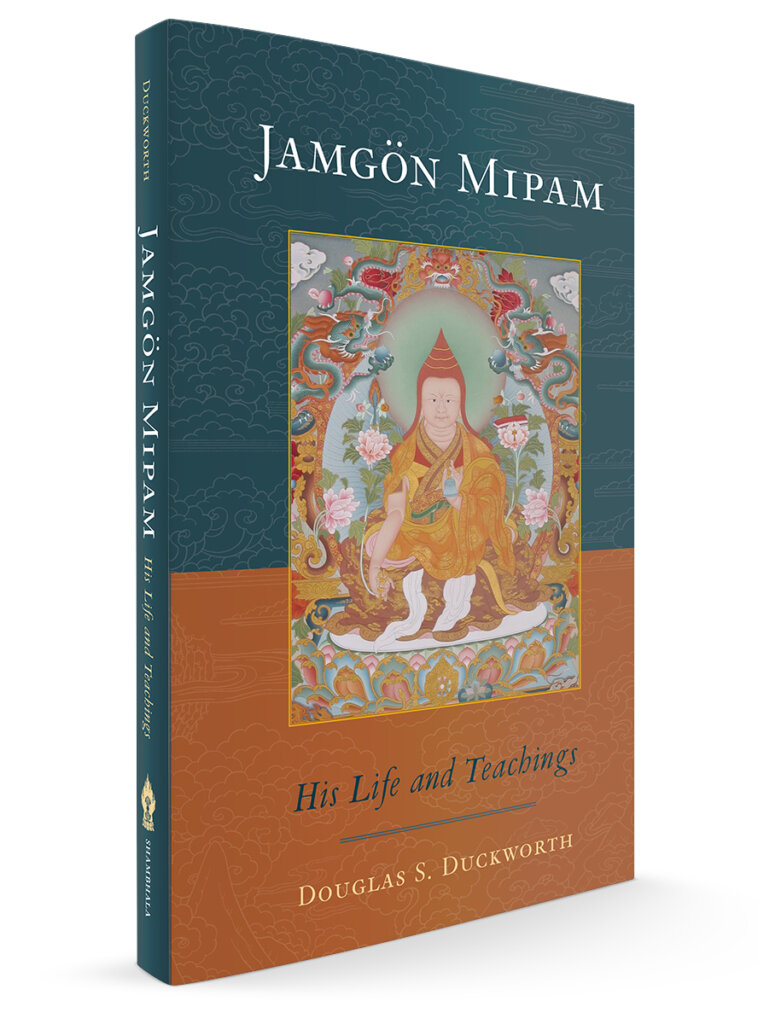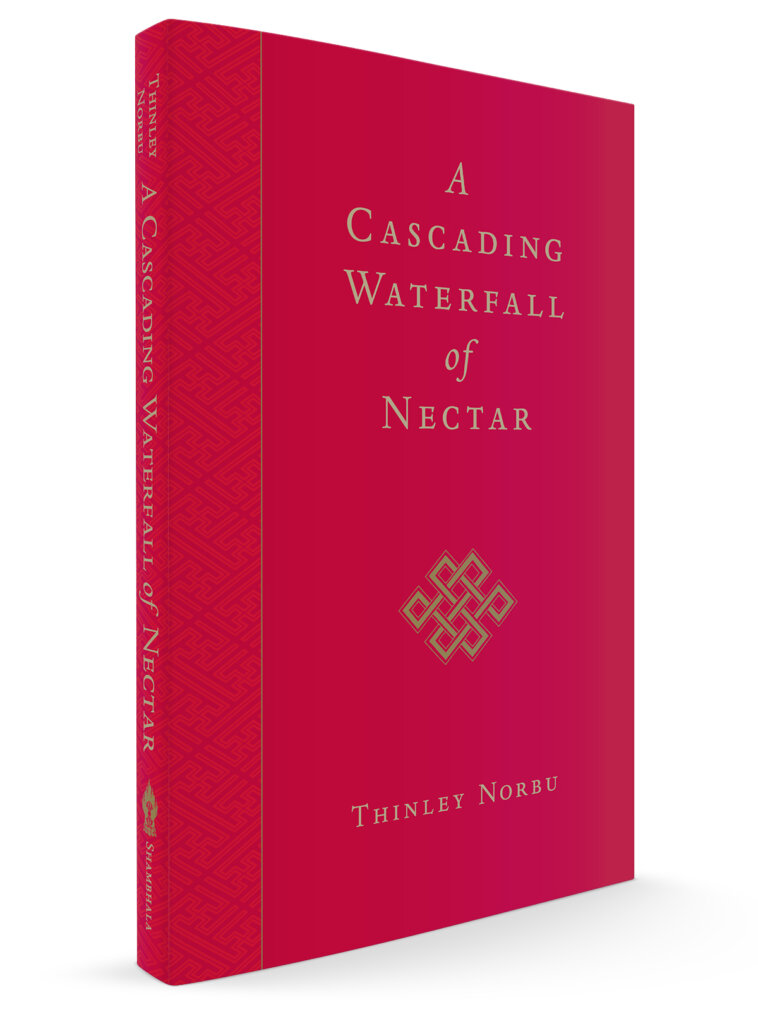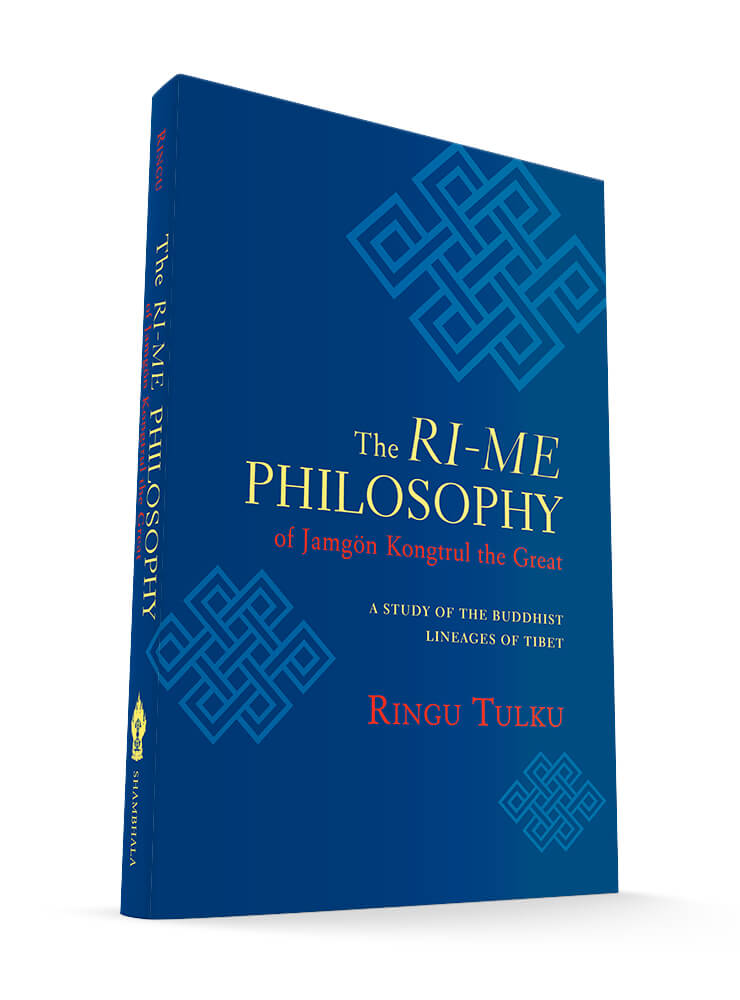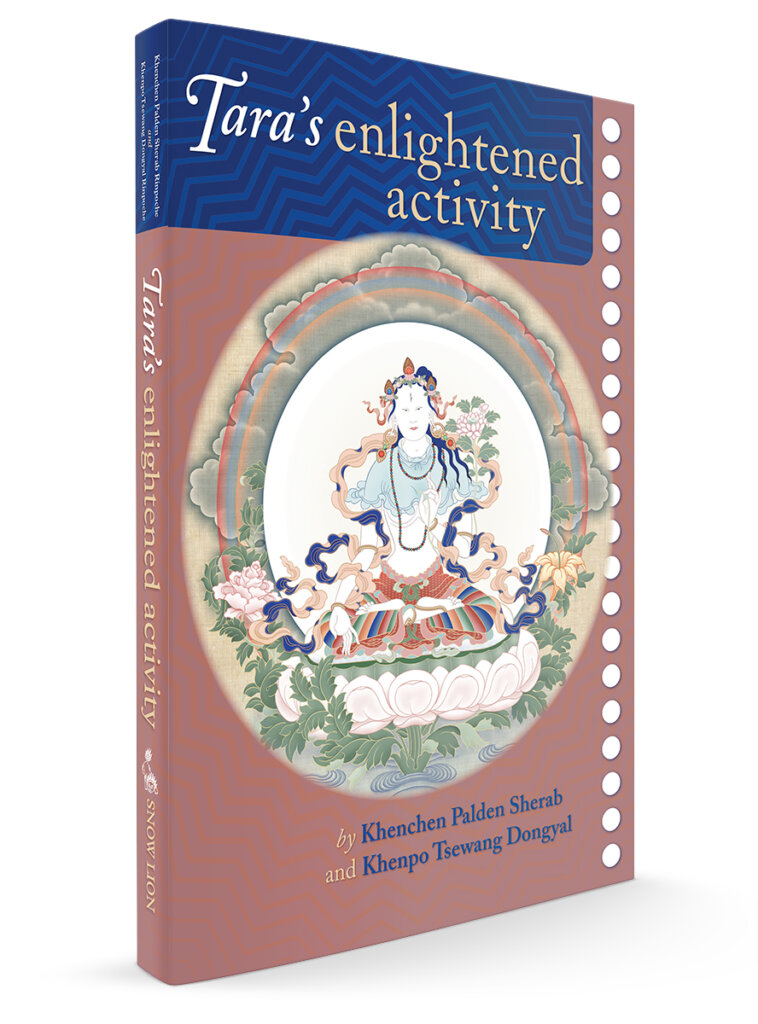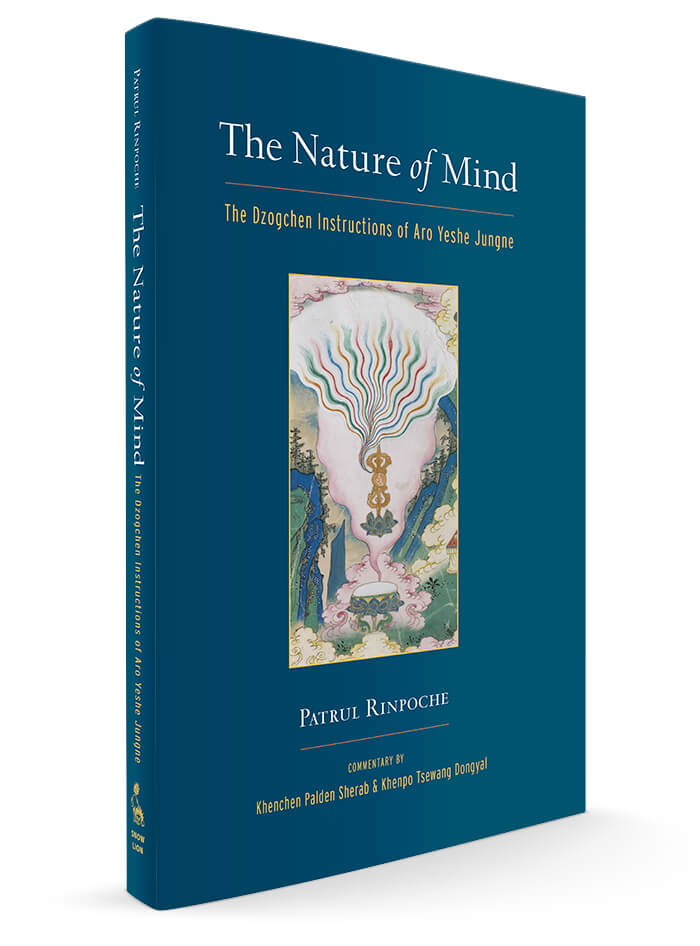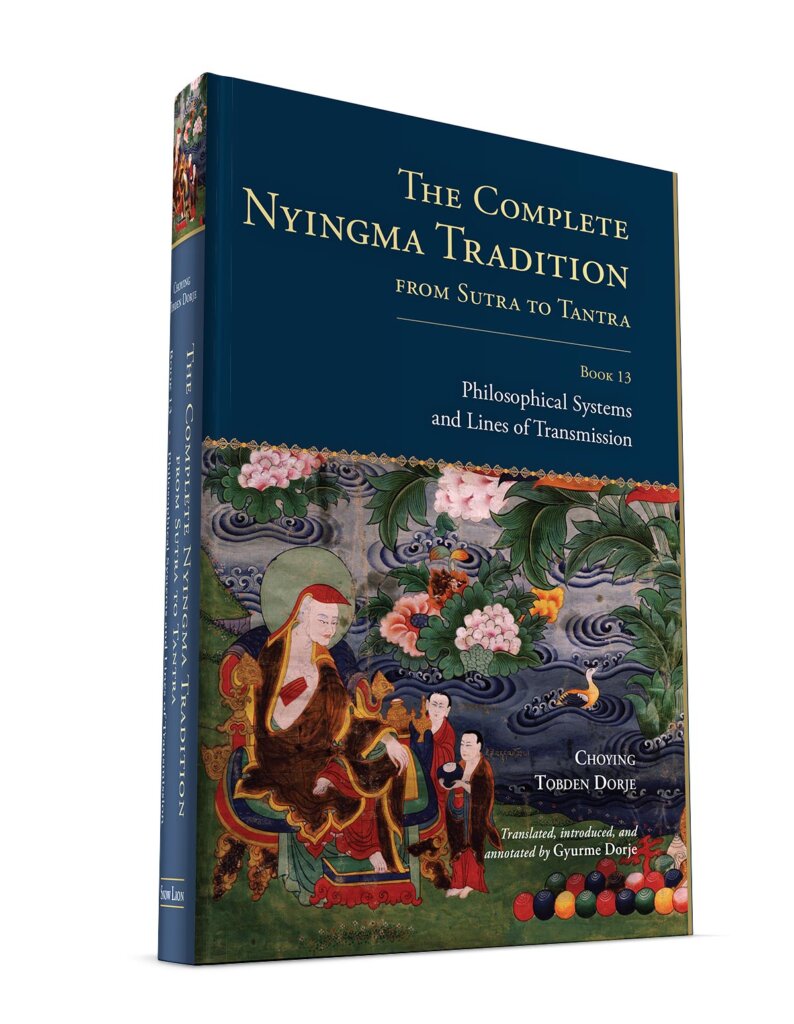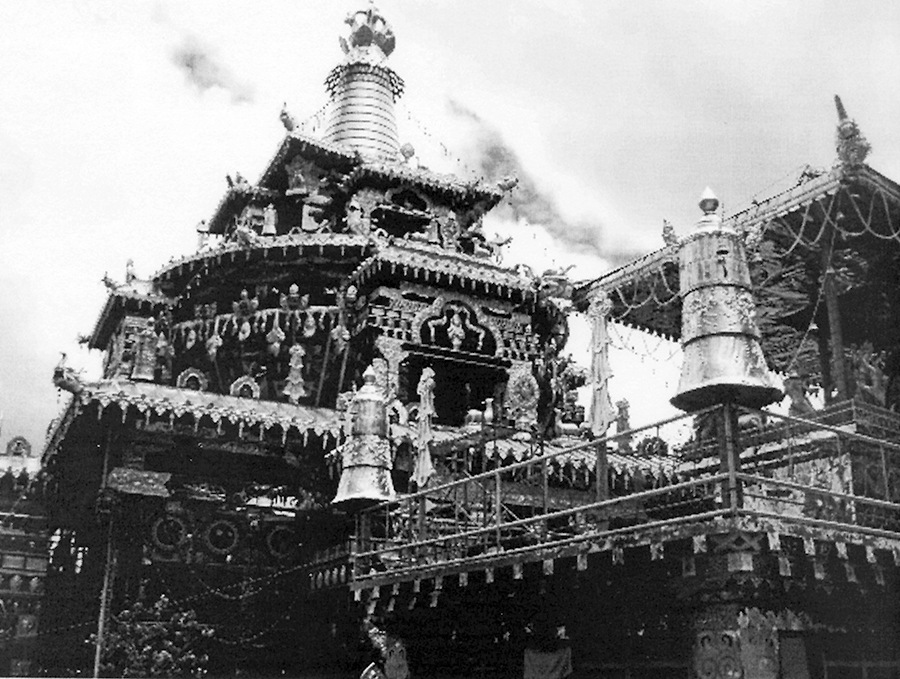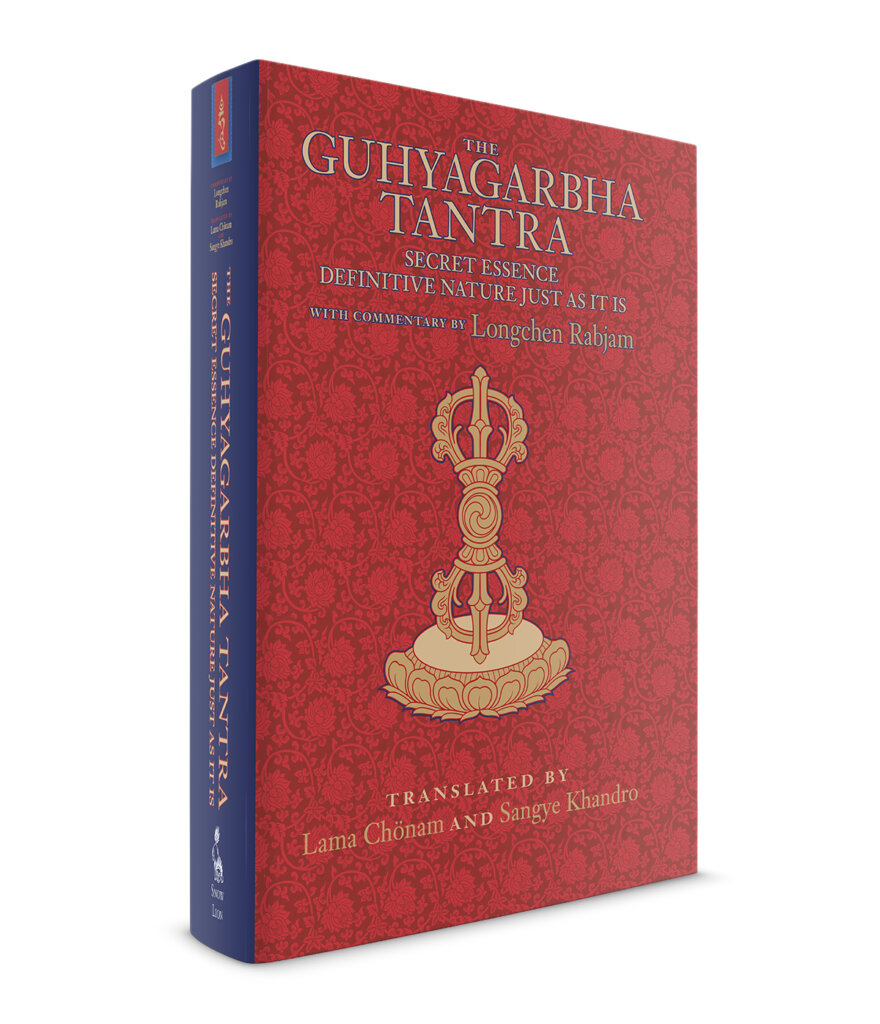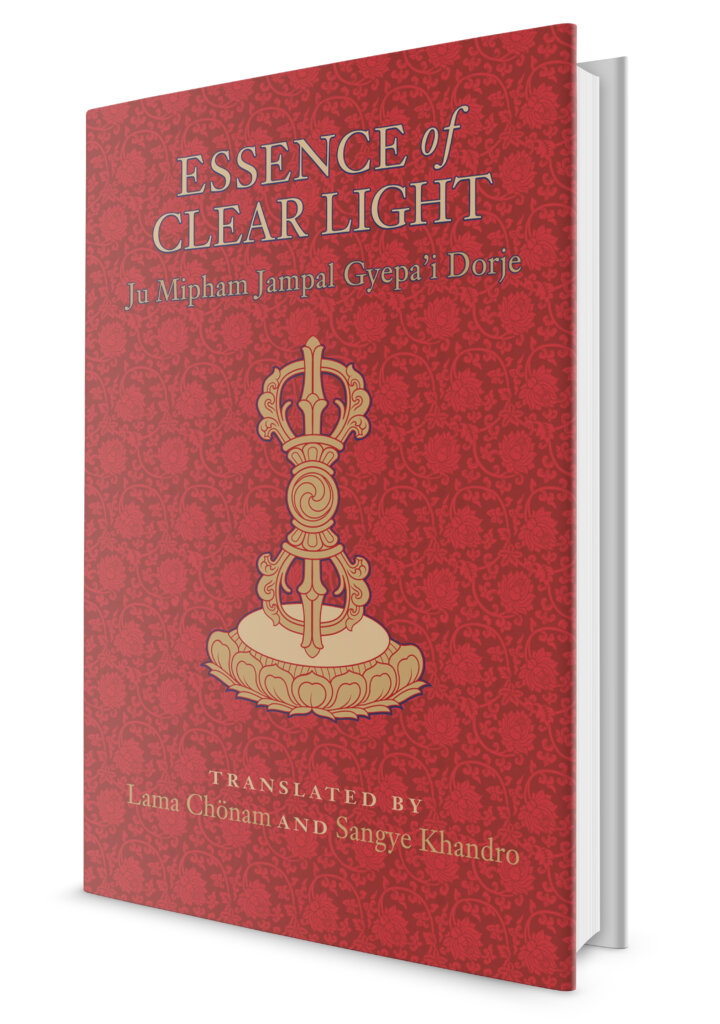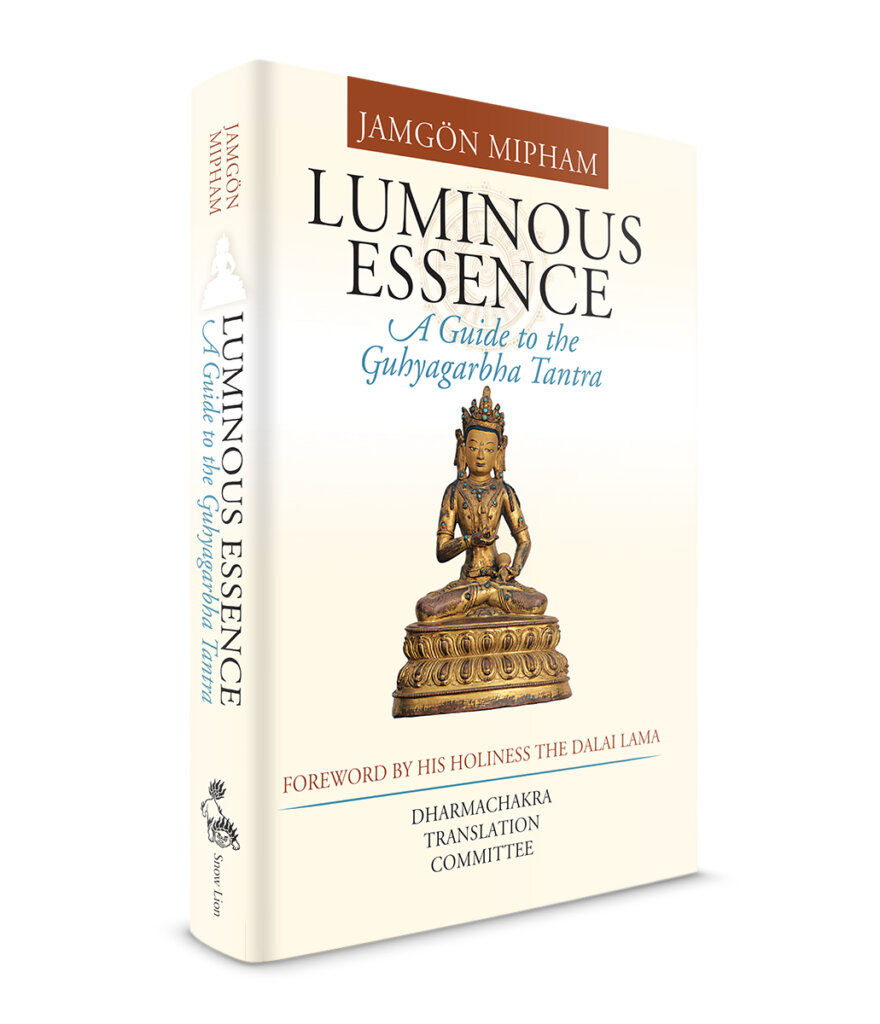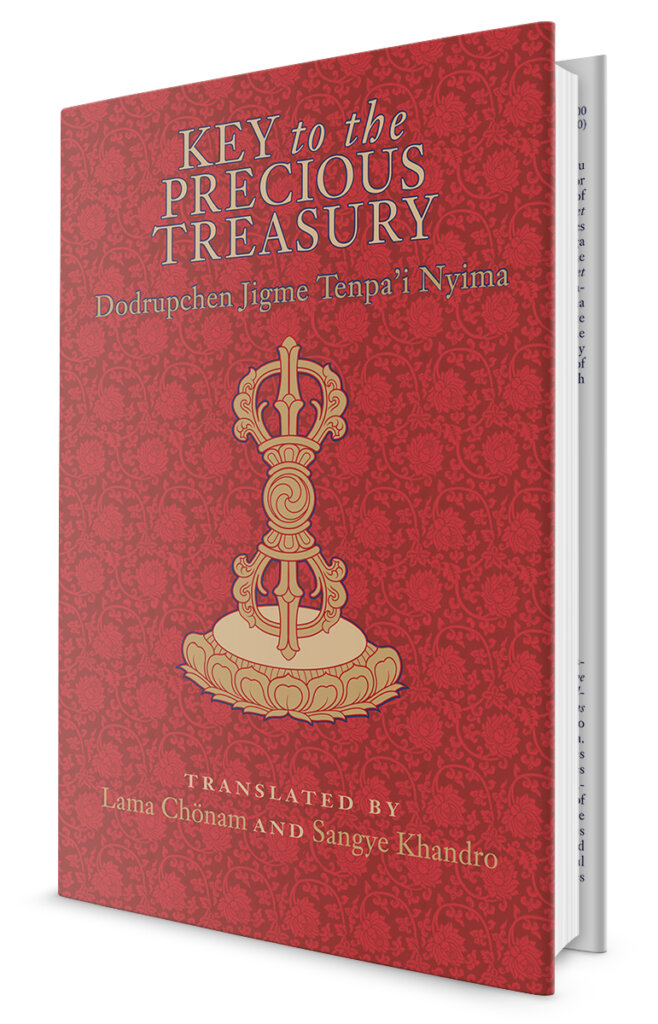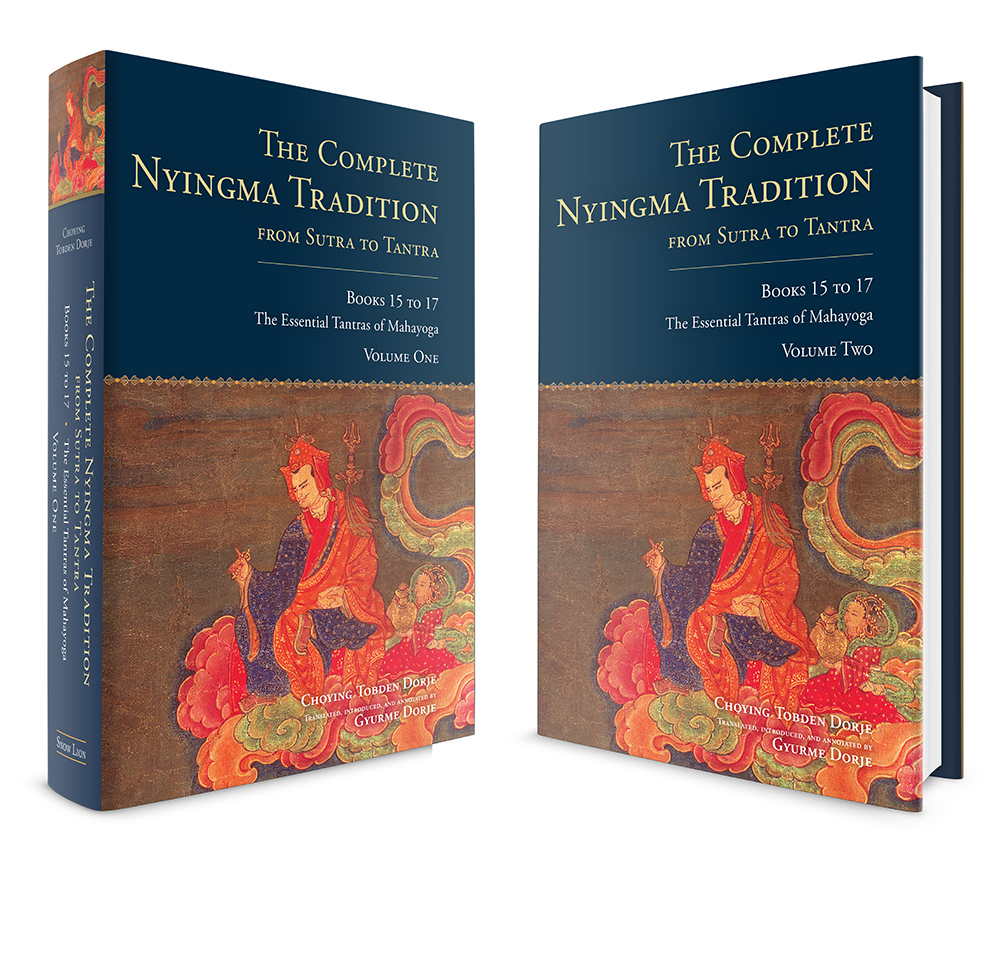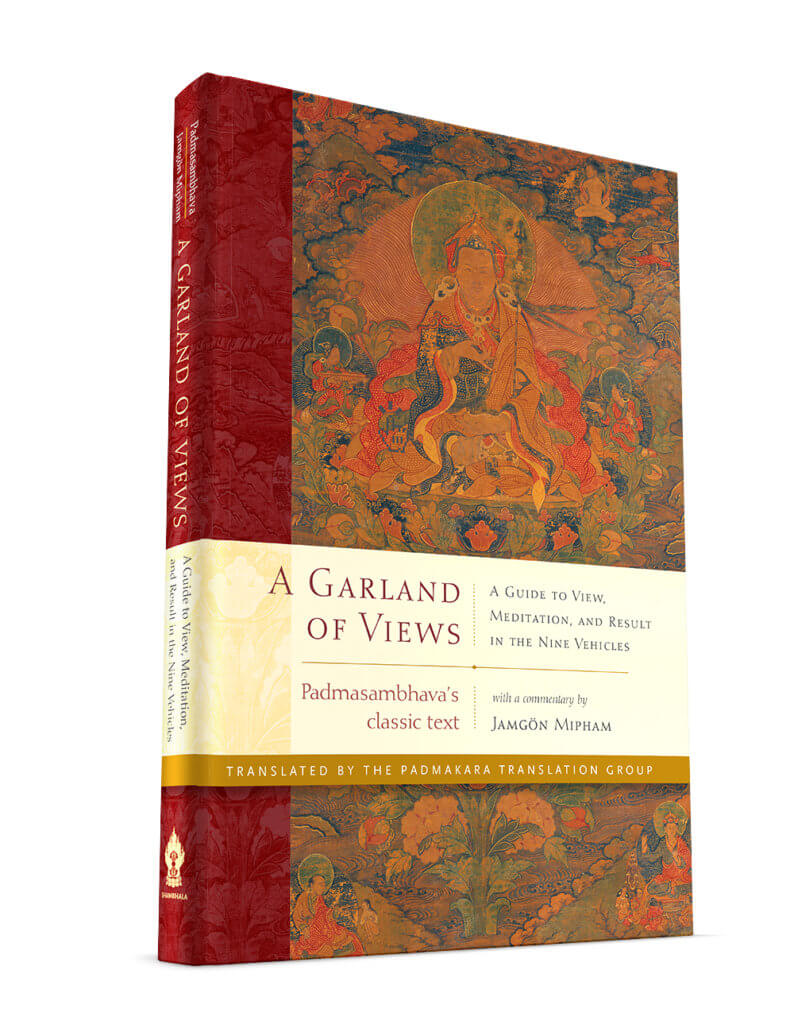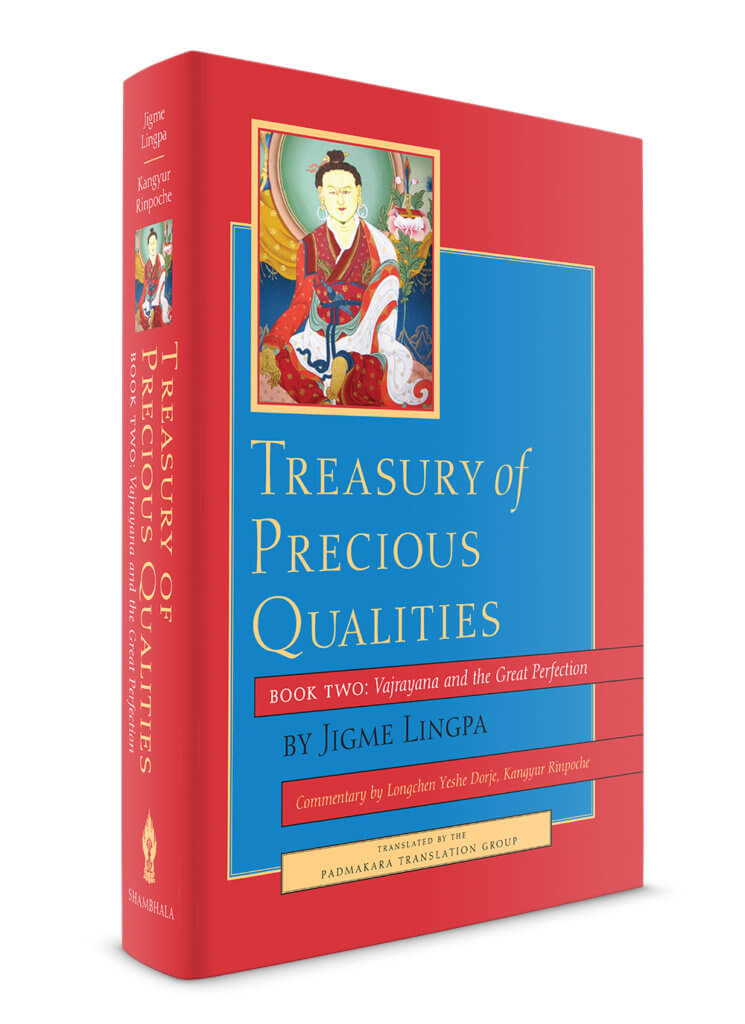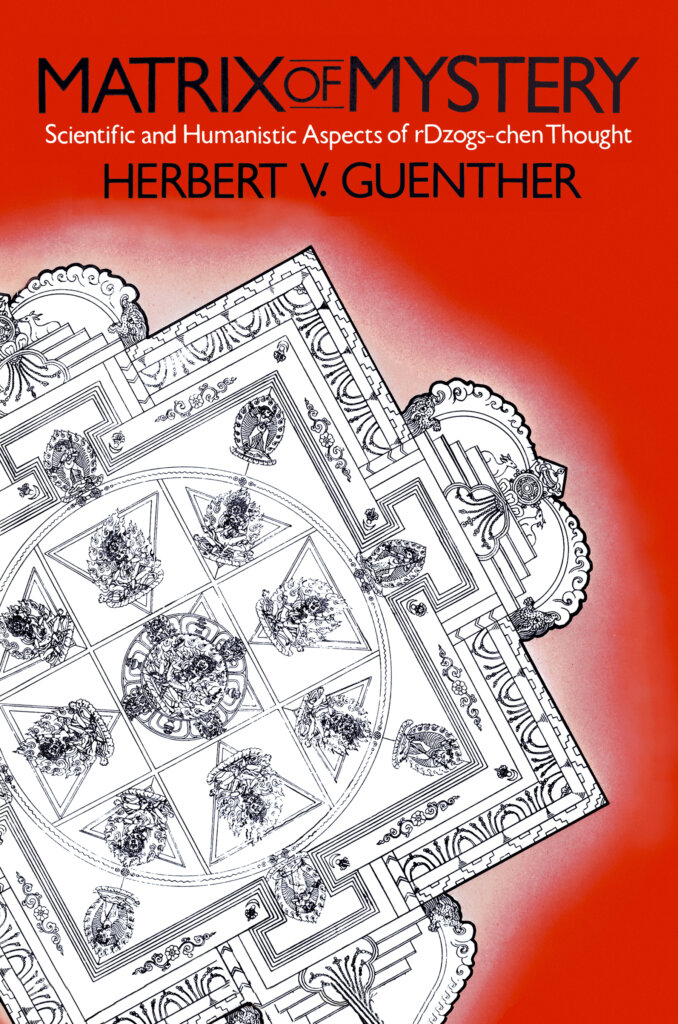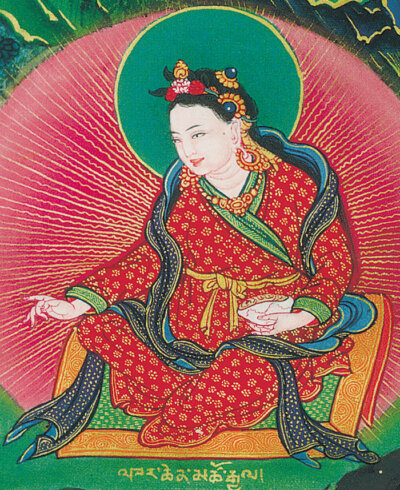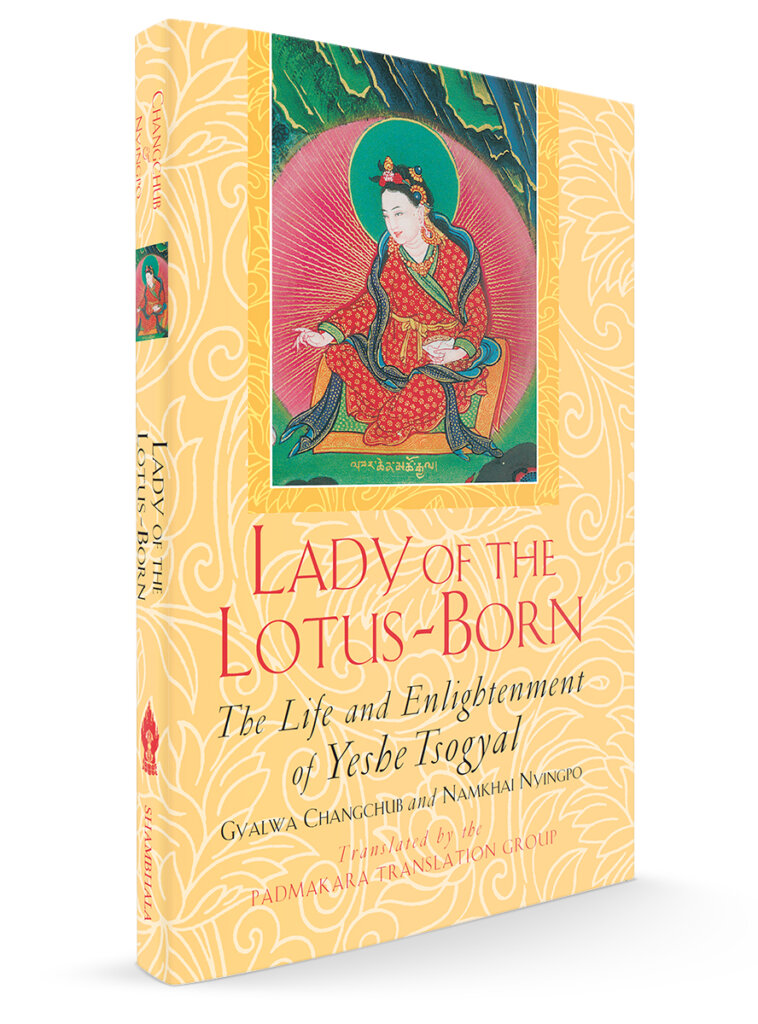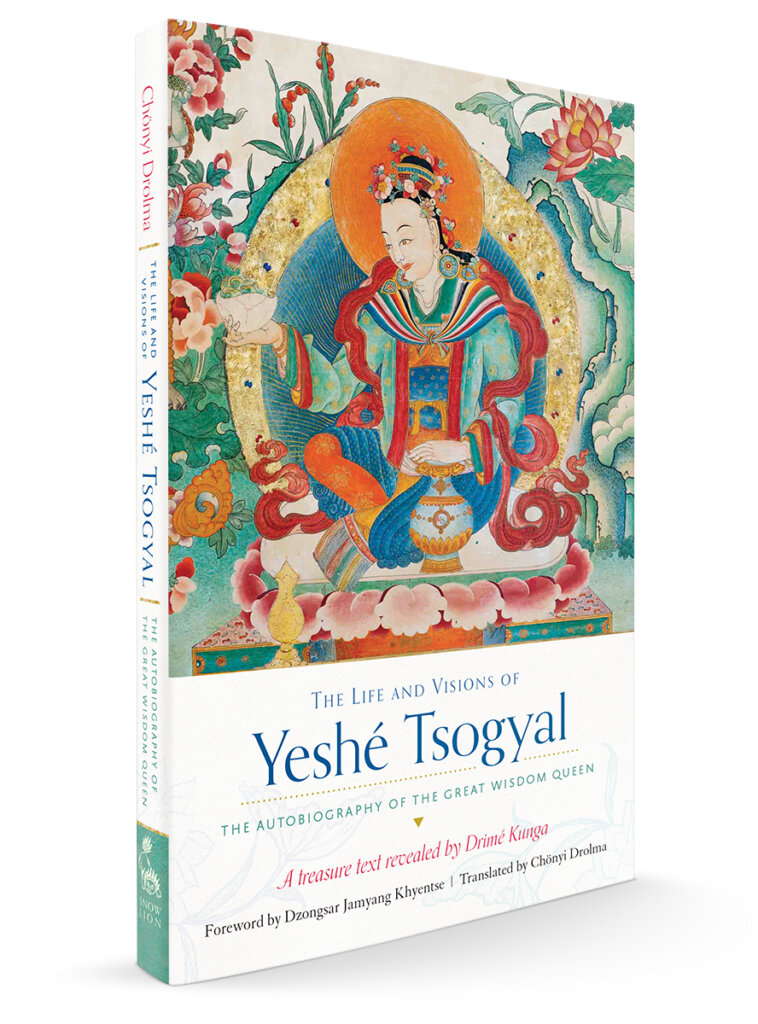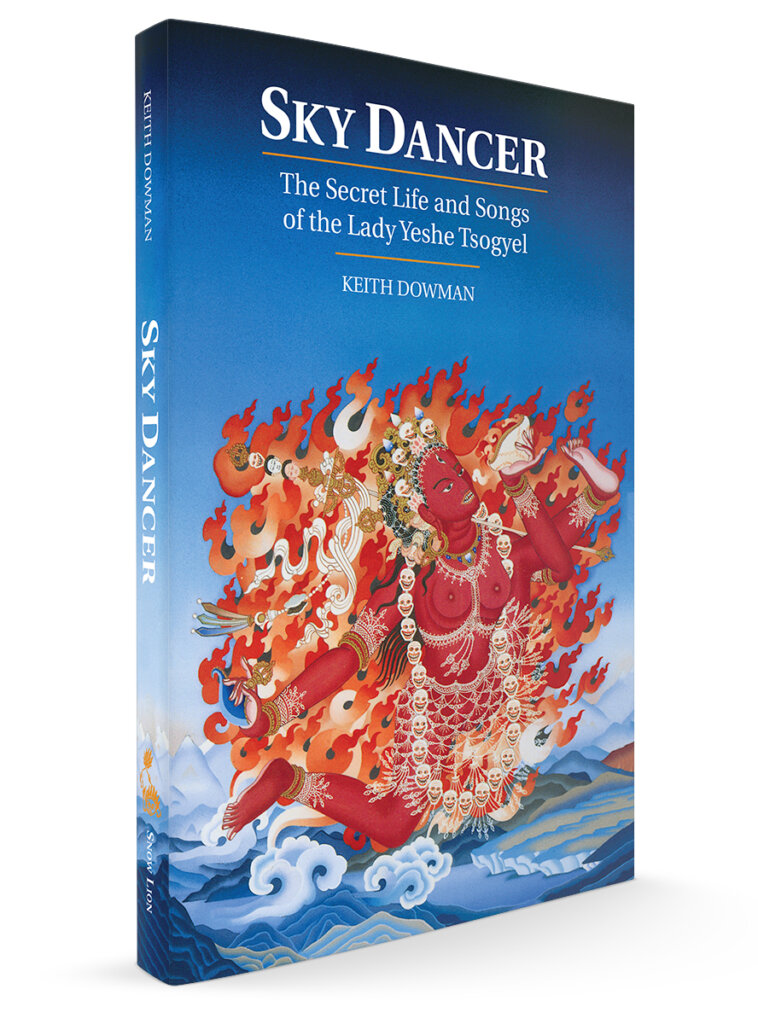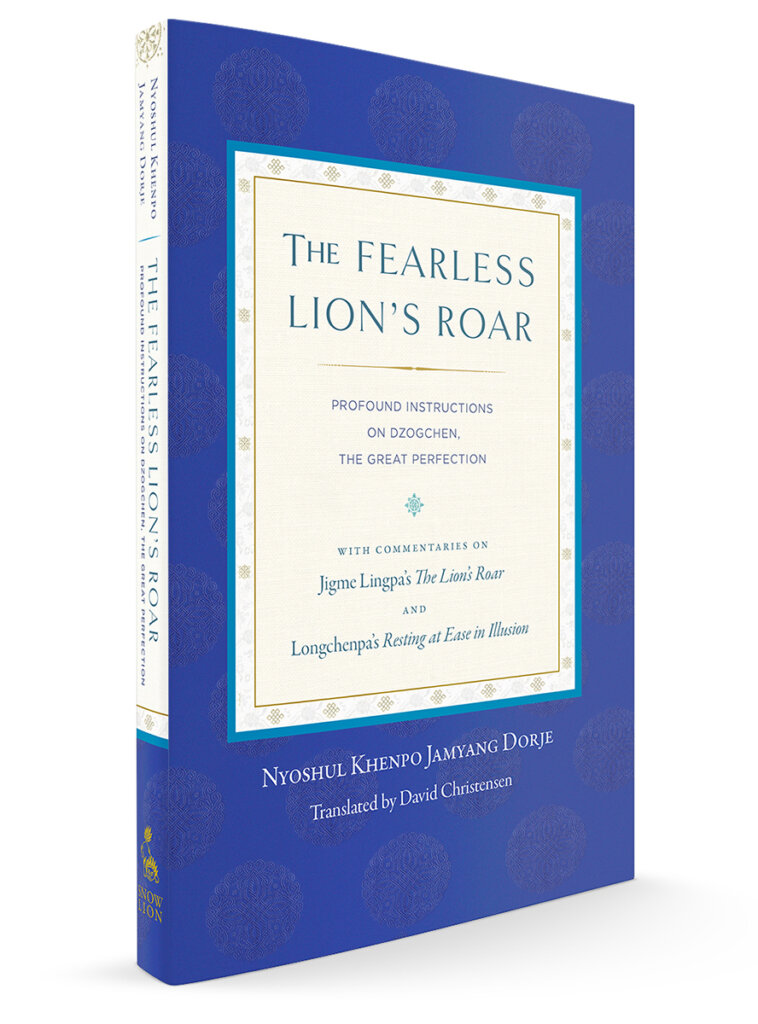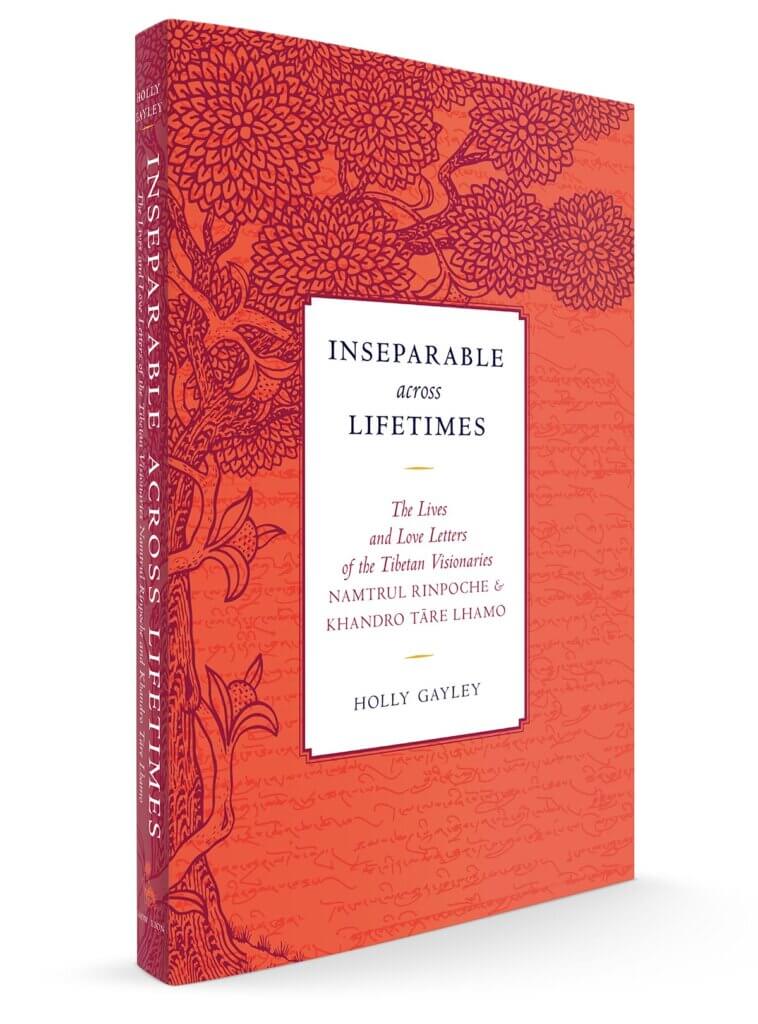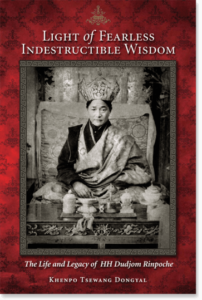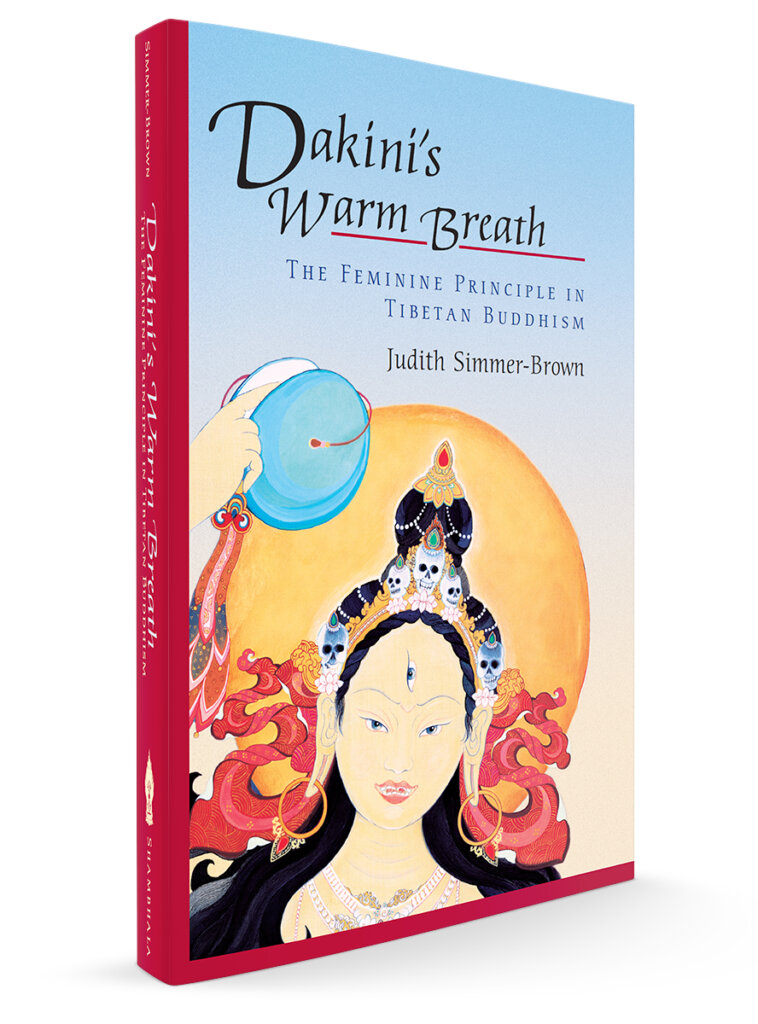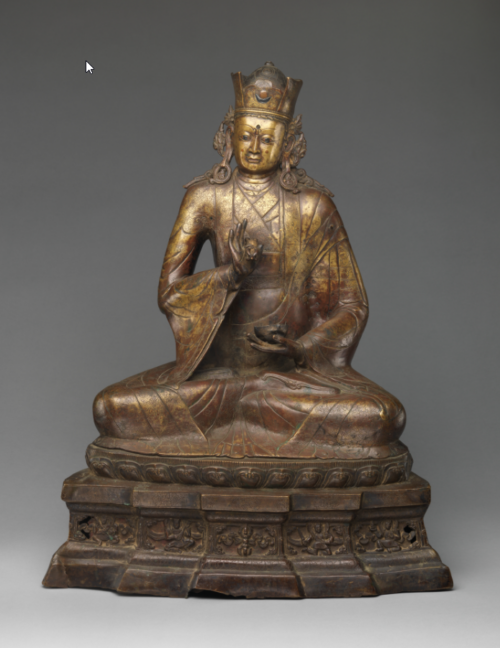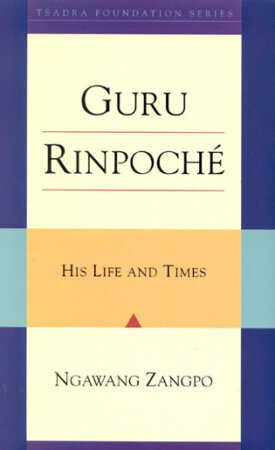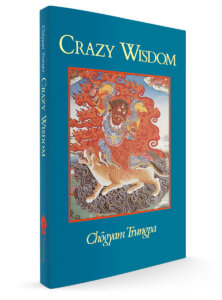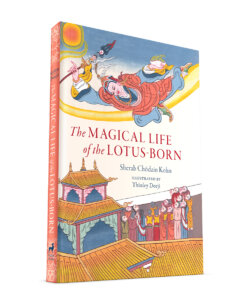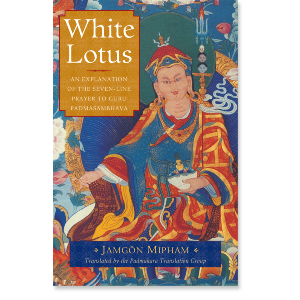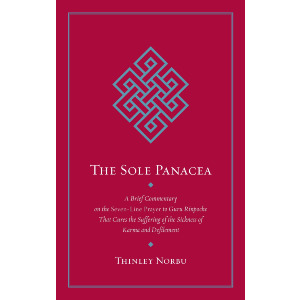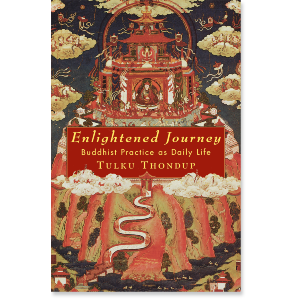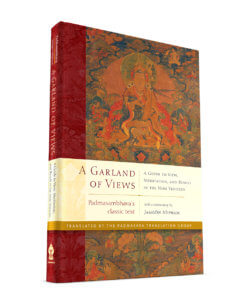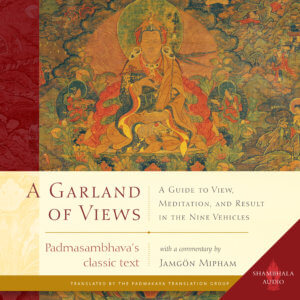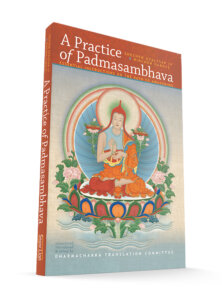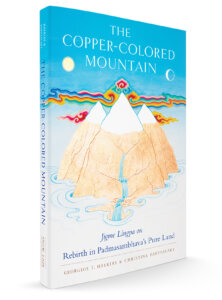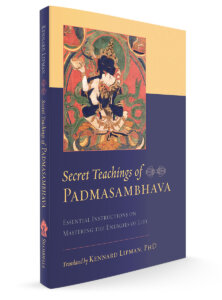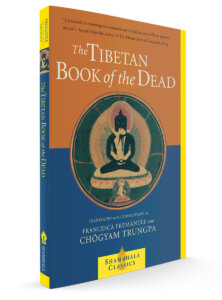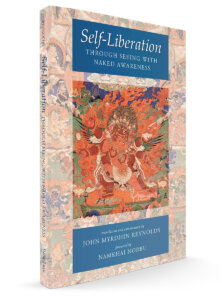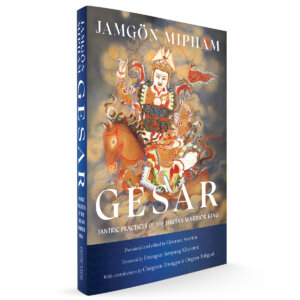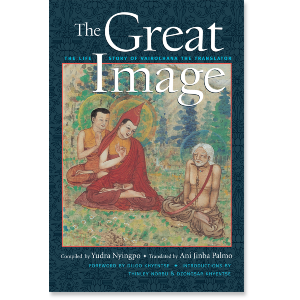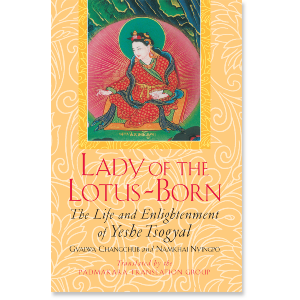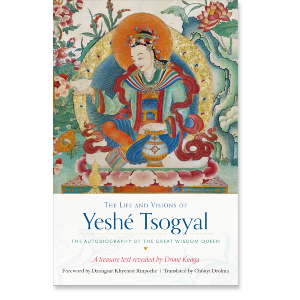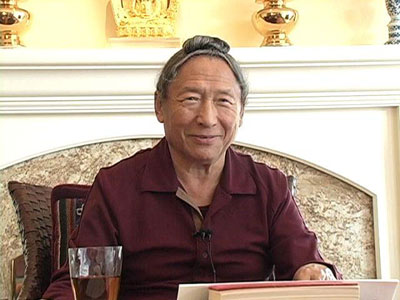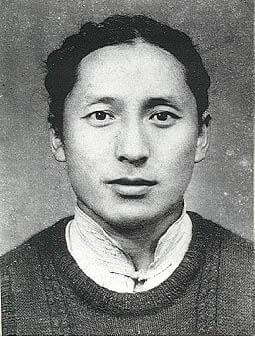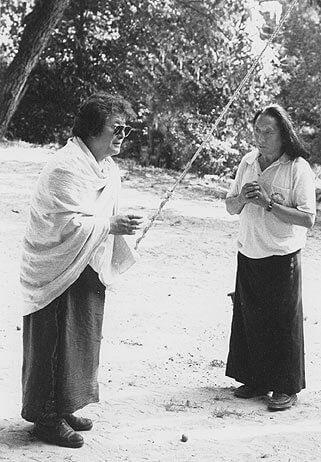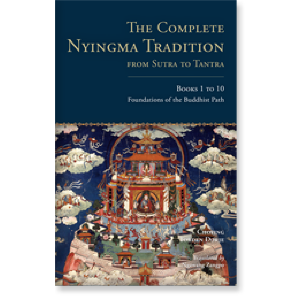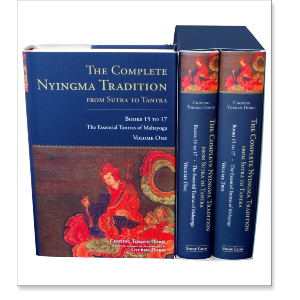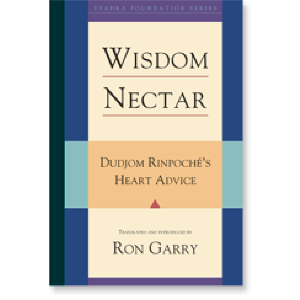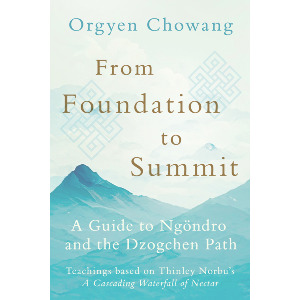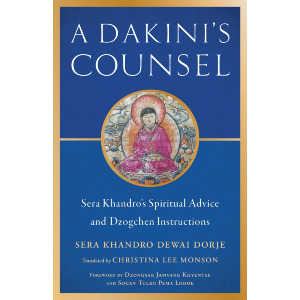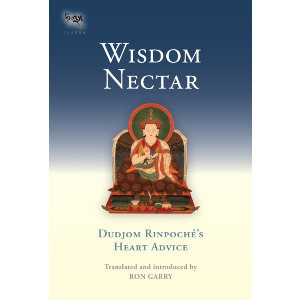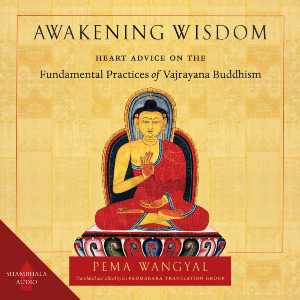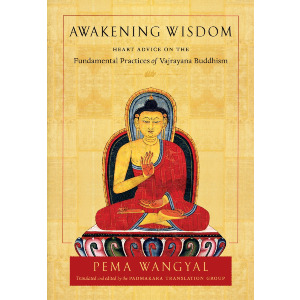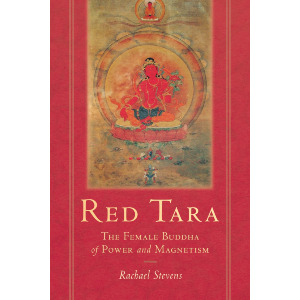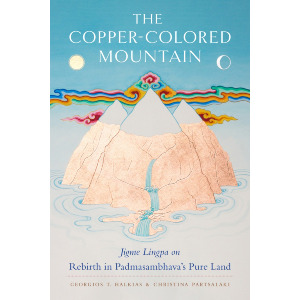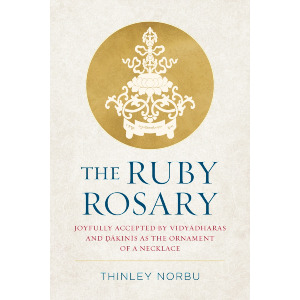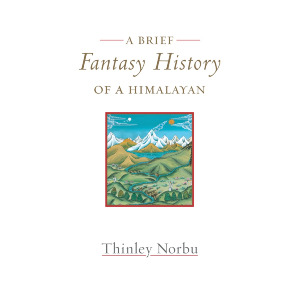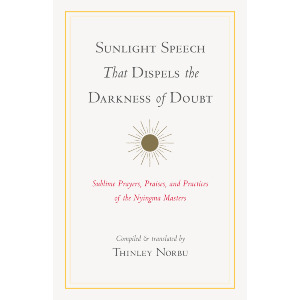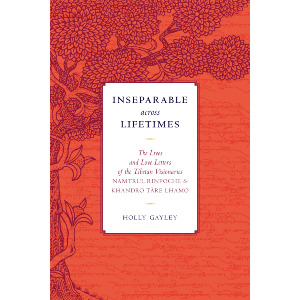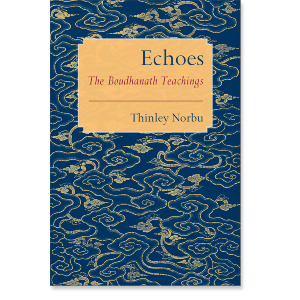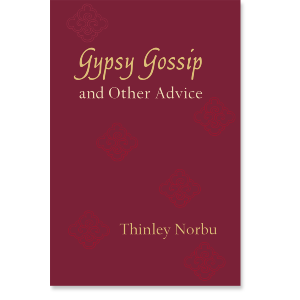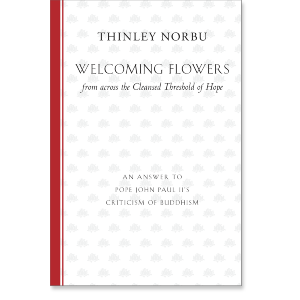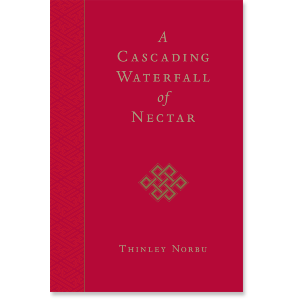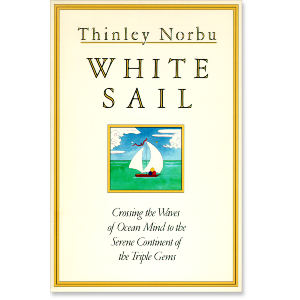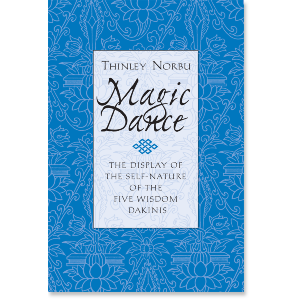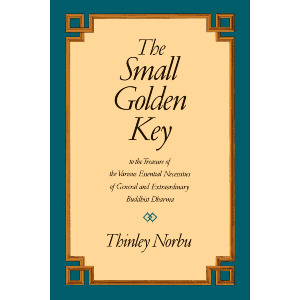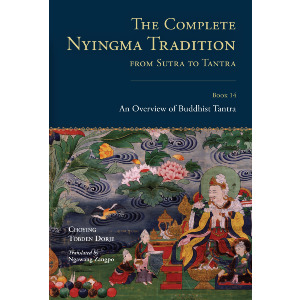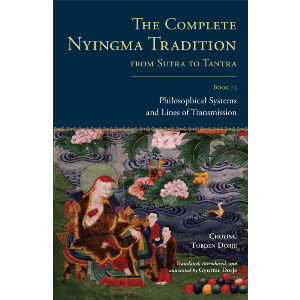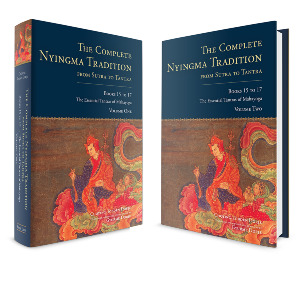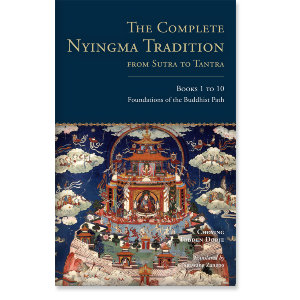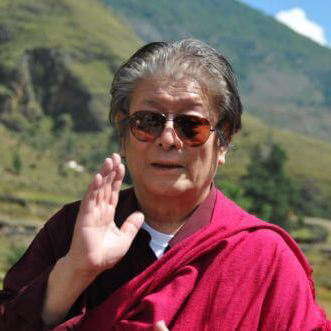

Thinley Norbu
Thinley Norbu (1931–2011) was a master teacher of the Nyingma lineage of Tibetan Buddhism, with many devoted students in the West as well as Asia. Revered as an emanation of the fourteenth-century master Kunkhyen Longchenpa, Kyabje Thinley Norbu Rinpoche was a scholar, writer, poet, and translator, whose prolific publications include A Cascading Waterfall of Nectar, his masterwork on the ngöndro (or preliminary practices); The Sole Panacea, on the Seven-Line Prayer of Guru Rinpoche; and A Brief Fantasy History of a Himalayan, an illustrated account of personal reminiscences.
Thinley Norbu
-
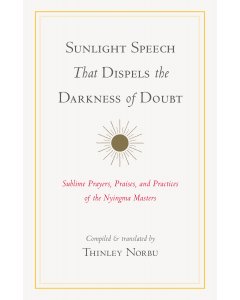 Sunlight Speech That Dispels the Darkness of Doubt$19.95- Paperback
Sunlight Speech That Dispels the Darkness of Doubt$19.95- PaperbackTranslated by Thinley Norbu
By Longchenpa
By Jigme Lingpa
By Jamgon Mipham
By Dudjom Rinpoche
By Patrul Rinpoche
- Bestsellers Tibetan 1 item
- Buddhist Biography/Memoir 3item
- Buddhist History 1 item
- Buddhist Overviews 2item
- Buddhist Philosophy 1 item
- Deity Practice 1 item
- Dzogchen 5item
- Guru Yoga 1 item
- Ngondro 1 item
- Dudjom Tersar 11item
- Longchen Nyingtik 1 item
- Nyingma Tradition 11item
- Phowa 1 item
- Seven Line Prayer 3item
- Tantra 2item
- Tulku Tradition 1 item
- Biography 1 item
GUIDES
Rongzom Mahapandita: A Guide for Readers to Rongzompa

Related Reader Guides:
Profiles of early Indian Mahayana figures | Tibetan Masters of the 8th Century | Tibetan Masters of the 10th-11th Centuries
Nyingma | Dudjom Tersar | Longchen Nyingtig | Namcho & Palyul
___________________
Guru Rinpoche | Mandarava | Rongzompa | Longchenpa | Jigme Lingpa | Patrul Rinpoche | Rongzompa
Sera Khandro | Mipham Rinpoche | Dilgo Khyentse | Dudjom Rinpoche
We Tibetans have one crown ornament and two earrings. The crown ornament is Padmasambhava, and the two precious earrings are Milarepa and Rongzom Chenpo Chökyi Zangpo.
—Gö Lotsawa Chenpo Shonnu Pal, from The Blue Annals
Rongzom Chökyi Zangpo (1012–1088)—also known as Rongzompa, Rongzom Mahapandita, Rongzom Chozang, and Dharmabhadra— is along with Longchenpa and Mipham Rinpoche, one of the pillars of the Nyingma tradition who systematized much of the philosophical principles of the school.
A short biography is included in Cortland Dahl's Entrance to the Great Perfection:
Rongzom Chökyi Zangpo, also known as Rongzom Mahapandita, is widely regarded as one of the two greatest exponents of the unique views and practices of the Nyingma school. Along with Longchenpa, he is known as an “Omniscient One.” This rare title connotes both breadth of knowledge and depth of realization. His innate intelligence was so great, in fact, that Rongzom himself once remarked, “Since there is no teaching that I did not study, my learning is not insignificant. Yet, as I never needed to review the teachings I received more than once, neither is it great.
Rongzom was a contemporary of Atisha, Marpa Lotsawa, and many others who were instrumental in establishing new Buddhist lineages in the land of snows. He wrote extensively on a broad range of topics and demonstrated an unparalleled mastery of the Buddha’s teachings. The Indian scholars he interpreted often commented on his universal knowledge, encouraging him to write his own treatises. He was also praised by some of the greatest masters of the Sarma traditions, such as Atisha and Marpa. Echoing their sentiments, the great Gö Lotsawa wrote: “In the snowy land of Tibet, Rongzom remains unequalled as a scholar.” The greatest testament to Rongzom’s accomplishments, however, is the lasting influence he has had on the great thinkers of the Nyingma school. Mipam, perhaps the greatest Nyingma thinker of recent times, modeled his views on those of Rongzom and Longchenpa, a debt that he acknowledges repeatedly in his writings. Rongzom’s thousand-year-old legacy continues to exert a powerful influence on spirituality in Tibet.
Essential Texts by Rongzompa
Paperback | Ebook
$29.95 - Paperback
Establishing Appearances as Divine: Rongzom Chokyi Zangpo on Reasoning, Madhyamaka, and Purity
By Rongzom Chokyi and Heidi I. Koppl
Establishing Appearances as Divine, a concise treatise by the eleventh-century Tibetan Buddhist philosopher Rongzom Chökyi Zangpo, sets out to prove the provocative point that everything that appears is actually deity manifest. Many books on Tibetan Buddhism address the important themes of mind training, compassion, and proper conduct, but this penetrating study and translation of Rongzom’s text goes beyond that in its aim to bring the reader face to face with his or her pure, divine nature.
This work is described in the present-day Nyingma tradition as a commentary on the Guhyagarbha Tantra. If one accepts this classification, it would lend further testimony to Rongzom’s general fondness for the Guhyagarbha teachings and his attempt to validate these teachings through the style of discourse usually associated with the classical dialectical approach. Considering that the initial thesis of Establishing Appearances as Divine follows almost verbatim that of Padmasambhava in his Garland of Views, a treatise that itself is based on the Guhyagarbha, one may reasonably conclude that the traditional classification of Establishing Appearances as Divine as a text pertaining to the Mahāyoga class of Tantra is valid.
Entering the Way of the Great Vehicle: Dzogchen as the Culmination of the Mahayana
By Rongzom Chokyi, translated and introduced by Dominic Sur
Rongzom Chökyi Zangpo wrote this treatise in the eleventh century during the renaissance of Buddhism in Tibet that was spurred by the influx of new translations of Indian Buddhist texts, tantras, and esoteric transmissions from India. For political and religious reasons, adherents of the “new schools” of Tibetan Buddhism fostered by these new translations cast the older tradition of lineages and transmissions as impure and decadent. Rongzompa composed the work translated here in order to clearly and definitively articulate how Dzogchen was very much in line with the wide variety of sutric and tantric teachings espoused by all the Tibetan schools. Using the kinds of philosophic and linguistic analyses favored by the new schools, he demonstrates that the Great Perfection is indeed the culmination and maturation of the Mahāyāna, the Great Vehicle.
There is an interesting note about Ronzom Mahapantida ability to commit teachings to memory only be hearing them a single time in Matthieu Ricard's account of Patrul Rinpoche, Enlightened Vagabond.
"When Rongzom Chökyi Zangpo was asked about the extent of his study of Buddhist scriptures, he answered, 'I can't say I studied extensively, since most of the texts I read only once. But I also can’t say that I didn’t study, since after reading them just once, I knew them almost by heart.”
Books Featuring Rongzom Chokyi Zangpo
Hardcover | Ebook
$39.95 - Hardcover
The Ruby Rosary Joyfully Accepted by Vidyadharas and Dakinis as the Ornament of a Necklace
By Thinley Norbu Rinpoche
The Ruby Rosary is Kyabje Thinley Norbu Rinpoche's explanation of The Pearl Necklace, a lineage prayer to the main figures in the Dudjom lineage. Rongzompa was on of this series of enlightened masters. This includes a dozen pages on this pillar of the Nyingma tradition, much of which is a translation of Mipham Rinpoche's account of his life.
The section concludes with:
In brief, this master was a peerless being who resided at the level of the truly great Noble Ones, and indeed his entire sacred life story of scholarship and realization is beyond the scope of ordinary minds. For the sake of ordinary beings, only the well-known and undisputed part of the sacred biography of this paṇḍita who unlocked the eight great treasures of sublime confidence is told here [by Mipham Rinpoche], based on the writings of Dorje Wangchuk, the layman of Yolchak, who was a direct disciple of the master. These writings are found in the great Gö Lotsawa’s Blue Annals, adorned with a few small extracts from the writings of [other] Tibetan scholars of the past.
Other Works that Include Rongzompa
Paperback | Ebook
$34.95 - Paperback
Jamgon Mipam: His Life and Teachings
By Jamgon Mipham and Douglas Duckworth
The great Mipham Rinpoche relied mainly on two giants in the Nyingma tradition: Longchenpa and Rongzompa. The latter appears throughout this extraordinary work on Mipham.
Duckworth demonstrates many key features of Rongzompa's influence on Mipham:
- The view of the Guhyagarbha Tantra
- The association of “essential nature” (Tib. snying po, Skt. garbha) with the meaning of the Great Perfection.
- Mipham appropriates Rongzom’s use of reason in what he calls the “valid cognition of pure vision”, which he uses to legitimate a view of appearances as divine (see Establishing Appearances as Divine above).
Paperback | Ebook
$28.95 - Paperback
A Cascading Waterfall of Nectar
Given Ronzompa's centrality in the Nyingma tradition and as a central figure in the Dudjom lineage, it is no surprise to see him, referred to as Omniscient [Kunkhyen] Rongzompa, throughout Kyabje Thinley Norbu Rinpoche's masterpiece here.
Ronzompa's words on eternalism and nihilism, alaya, the nature of deity, Buddhahood, the nature of emptiness, and much more.
In Rosary of the View Commentary (on the Guhyagarbha)by Great Omniscient Rongzom, it says:
If it is explained here, the nature of Vajra Kuntuzangpo
is the enlightened mind.
The nature of mind is enlightened, so it is vajra.
So therefore, from all to all, there are no phenomena
to abandon or throw away,
So it is always noble. That is why it is called Kuntuzangpo.
Paperback | Ebook
$24.95 - Paperback
The Ri-me Philosophy of Jamgon Kongtrul the Great: A Study of the Buddhist Lineages of Tibet
By Ringu Tulku
Ringu Tulku quotes Rongzompa's Points to Remember about the View at length when disussing how the higher and lower views relate to eachother. Towards the end of this several page section, Rongzompa explains,
All the Buddha’s teachings are of one taste and one way; nothing is excluded within the state of vast equality. For example, all the small streams flow into large rivers and then accompany the large rivers to flow into the ocean. Within the vast ocean, all the rivers have the same taste of salt. Similarly, all the small entrances of the lower yanas are small rivers of understanding personal selflessness, which wash away the dirt of the belief in substantial entities. They join the large rivers of the Mahayana sutras and all of them end up in the great ocean of Dzogpa Chenpo. There is not even a particle of dust that does not become of one taste with this great, vast equality.
Ringu Tulku also explains how their is a Rong Luk (tradition of ROngzompa) in explaining the Guhyagarbha tanta, stemming from his receiving the teachings from the lineages of Guru Rinpoche, Vairocana, and Vimalamitra.
Regarding the inner tantras, Rongzompa seven transmission lineages, ennumerating:
- Oral tradition or kama
- Earth terma
- Rediscovered terma
- Mind terma
- The Hearing Lineage
- The Pure Vision lineage
- Teachings recollected from past lives.
Paperback | Ebook
$16.95 - Paperback
Tara's Enlightened Activity: An Oral Commentary on The Twenty-one Praises to Tara
By Khenchen Palden Sherab and Khenpo Tsewang Dongyal
In their definitive work on the Twenty-one Taras, the Khenpo brothers discuss how Rongzompa was the first recorded source of Tara teachings that are still preserved in Tibet. Rongzompa’s lineage was passed down in the Nyingma School and received by Jigme Lingpa in the eighteenth century. Jigme Lingpa revealed a famous terma on the wisdom dakini Yeshe Tsogyal. Its condensed title is Dechen Gyalmo, or “Queen of Great Bliss.” He taught that externally we practice on Yeshe Tsogyal as she is, but inwardly we practice on the Twenty-one Emanations of Tara.
Paperback | Ebook
$21.95 - Paperback
The Nature of Mind: The Dzogchen Instructions of Aro Yeshe Jungne
By Patrul Rinpoche, Khenchen Palden Sherab, and Khenpo Tsewang Dongyal
Rongzompa makes a brief appearance here when the Khenpo brothers discuss his role in the Aro tradition that is the focus of this book.
Two lineages sprang from the great master Aro Yeshe Jungne. The first one began with these:
- Aro Yeshe Jungne
- Yazi Bonton of Kham
- Drulsha Gyalpo of Kharab
- Drumshig Sherab Monlam of Wu
- Chogro Sangkar of Tsam
- Rongzom Chokyi Zangpo
Rongzompa then incorporated the Aro teachings into the Nyingma kama. As a result, as the Nyingma kama flowed through the centuries into the present day, naturally the Aro teachings flowed with it.
Paperback | Ebook
$39.95 - Hardcover
The Complete Nyingma Tradition from Sutra to Tantra, Book 13: Philosophical Systems and Lines of Transmission
By Choying Tobden Dorje. tTranslated by Gyurme Dorje, with contributions by Lama Tharchin Rinpoche
Rongzompa makes a brief appearance here when Choying Tobden Dorje describes the transmission in Tibet of the Father Tantra cycle of Yamāri.
Rongzom ChoZang "attended upon Upālaśrīmitra [elsewhere identified as Upaya Shri Mitra] , and he translated the tantras of the Black [Slayer of Death] and Vajrabhairava and others, and also undertook their exegesis."
Additional Resources on Rongzompa
Lotsawa House has several important translations of Ronzompa's work including The Black Snake Discourse. 

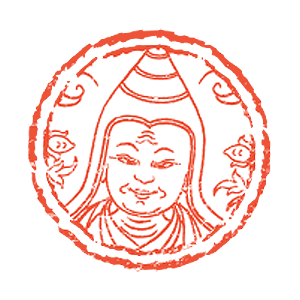 The Treasury of Lives also has a profile of Rongzompa.
The Treasury of Lives also has a profile of Rongzompa.
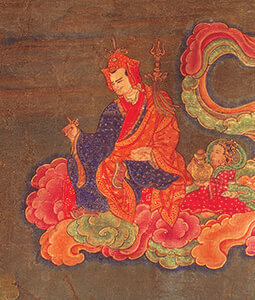
The Guhyagarbha Tantra: A Reader's Guide to the Glorious Secret Essence

The Life and Visions of Yeshe Tsogyal
See Also: Dudjom Tersar | Longchen Nyingtig | Namcho & Palyul
___________________
Guru Rinpoche | Mandarava | Rongzompa | Longchenpa | Jigme Lingpa | Patrul Rinpoche |
Sera Khandro | Mipham Rinpoche | Dilgo Khyentse | Dudjom Rinpoche
As Kyabje Dungse Thinley Norbu Rinpoche has said, "The ultimate source for the entirety of Sutra and Tantra is the King of Tantras, The Guhyagarbha, Glorious Secret Essence." The Guhyagarbha Tantra summarizes the heart of all eighteen great Mahayoga tantras and is the general tantra of the category of enlightened mind. This Secret Essence Tantra is the most advanced and extensively studied tantra within the Nyingma lineage; and its twenty-two chapters elucidate how to correctly view the ground, traverse the path, and ultimately reach the result-fully enlightened buddhahood.
The tantra of the Glorious Secret Essence (the Guhyagarbha Tantra) extracts the essence of the eighteen Mahayoga tantras and is also the general tantra of enlightened mind. The twenty-two chapters of this tantra describe the three tantras of the ground path and result and explain the topics of tantra needed to perfect the practice.
Studying the Secret Essence is crucial for all who seriously wish to learn any of the three inner tantras, as Mahāyoga is the foundation of all the inner tantras and the Secret Essence is the root tantra of Mahāyoga. The great Mipham writes, “One must learn the tantric trainings by relying on Mahāyoga, as it teaches the ground, path, and result of all tantric cycles.” He also says, “Correct understanding of the visions of all three inner tantras depends on understanding the Secret Essence.” The Secret Essence is also the source of numerous teachings on the one hundred peaceful and wrathful deities, one volume of which—the Tibetan Book of the Dead—is quite popular in the West.
Please note that many of the books listed here require that you have received certain teachings and/or empowerments. Please see the respective book pages for details. Until you receive them, the books are best used as something for your shrine.
Hardcover
$150.00 - Hardcover
The Guhyagarbha Tantra: Secret Essence Definitive Nature Just as It Is
By Longchenpa
Translated by Lama Chonam and Sangye Khandro
The twenty-two chapters of this tantra elucidate how to correctly view the ground, traverse the path, and ultimately reach the result—fully enlightened buddhahood.
The first part of this book includes the Tibetan and English translation for the root tantra itself.
The second part of this volume is a translation of the extensive com1nentary on The Guhyagarbha Tantra called Thorough Dispelling of Darkness throughout the Ten Directions written by the omniscient Longchenpa, who was an actual emanation of Samantabhadra. His word-for-word commentary gives uncommon explanations regarding all stages of Vajrayana practice, including comprehensive teachings from the Dzogchen point of view on how to practice and accomplish the path to enlightenment. The author includes complete explanations of the peaceful and wrathful mal).cJalas, as well as practical instructions needed to attain the four states of vidyadharahood.
We have two translations of Mipham Rinpoche's famous commentary on the Guhyagargbha:
Essence of Clear Light: An Overview of the Secret Commentary "Thorough Dispelling of Darkness throughout the Ten Directions"
By Jamgon Mipham Rinpoche
Translated by Lama Chonam and Sangye Khandro
This commentary on the Secret Essence by Mipham Rinpoche illuminates all the crucial points of the entire path of Secret Mantra Vajrayana. The teachings contained in Essence of Clear Light are not only useful for dharma practice in general but are especially applicable for the practice of the three innermost yogas of Secret Mantra. For that application there are the eleven topics well known throughout the teaching of tantra that are clearly elucidated in this text. The topics are: the nature as it is, the view immovable, samadhi forsaking the pass, conduct the array, mandala traversing the stages, empowerment not transgressing, samaya pursuing the goal, accomplishment presentation to the places, offerings the manifestation, enlightened activity binding, mudra and recitation, and mantra. These topics are the crucial points of the path through which the common and supreme siddhis are brought to fruition.
As Mipham Rinpoche points out in this commentary, if these topics are not understood, then there is no other method through which the final result on the path can be achieved. In brief, this excellent text brings an undeniable understanding that all dualistic phenomena arising from the ignorance of grasping and fixating are primordially pure as the truth of inseparable purity and evenness, or the great dharmakaya. Aside from realizing this view, there is no other method through which to receive the genuine wisdom transmission of the lineage of the vidyadhara masters. This doctrine of the great secret, the Guhyagarbha Tantra is the heart essence of a million wisdom dakinis and the path that was traversed by the accomplished vidyadharas of India and Tibet.
Hardcover
$95.00 - Hardcover
Hardcover | Ebook
$34.95 - Hardcover
Luminous Essence: A Guide to the Guhyagarbha Tantra
By Mipham Rinpoche
Translated by the Dharmachakra Translation Committee
Mipham's explanation of this text, here translated for the first time, is one of the most celebrated commentaries on the Tantra of the Secret Essence, which today occupies an important place in the tantric curriculum of Tibetan monastic colleges. Luminous Essence is a specialized guide meant for initiated tantric practitioners. To fully appreciate and assimilate its message, it should be studied under the guidance of a qualified teacher by those who have received the appropriate empowerments, reading transmissions, and oral instructions.
Key to the Precious Treasury
By Dodrupchen Jigme Tenpa'i Nyima
Translated by Lama Chonam and Sangye Khandro
As the author Dodrupchen Tenpa'i Nyima himself has said, this glorious Secret Essence Tantra possesses eight great features. It is the king of all tantras, pinnacle of all vehicles, origin of all doctrines, general commentary for all scriptural transmissions, core wisdom, intent of all the victorious ones, ultimate state of all results, path that all tathagatas have embarked upon, and great path of all true practitioners. Commentary to the Guhyagarbha Tantra, the Key to the Precious Treasury, synthesizes the meaning of all eighteen Mahayoga tantras from the perspective of the author's personal realization and authoritative scholarship. As the means through which serious practitioners can realize the truth of inseparable purity and evenness, this teaching is the guide for knowing how to internalize the Secret Mantra path of the generation and completion stages.
Th ere are a number of major commentaries3 on the Secret Essence; however, Ihas become one of the four most popular commentaries. It was written by the Third Dodrupchen, a highly
respected scholar and adept. Referring to the Third Dodrupchen’s famous treatise about memory, the Th irteenth Dalai Lama noted, “Today, a writer of this quality is very rare in this land.” The present Dalai Lama has frequently praised the Third Dodrupchen’s writings, too. He says, “Reading Dodrupchen was as if he were stroking my head in confirmation, giving
me confidence that my insight was not unfounded.”
Hardcover
$95.00 - Hardcover
Hardcover | Ebook
$59.00 - Hardcover
**Note: Books 15-17 is purchased as a single item but is in fact two separate books that ship wrapped together.
The Complete Nyingma Tradition from Sutra to Tantra, Books 15 to 17: The Essential Tantras of Mahayoga
By Choying Tobden Dorje
Translated by Gyurme Dorje
Contributions by Lama Tharchin
Two of the books of the Complete Nyingma Tradition, the masterpiece and most extensive presentation of the Nyingma thought and practice available in English, are focused on the Guhyagarbha Tantra. The two books present the entire text of the Guhyagarbha Tantra, in Tibetan and English, together with the interlinear sections of one of its most important commentaries, Dispelling the Darkness of the Ten Directions, by the outstanding fourteenth-century master Longchen Rabjam. Also included is Choying Tobden Dorje’s rewriting of Candragomin’s inspirational Extensive Commentary on the Sublime Litany of the Names of Manjushri.
Paperback | Ebook
$24.95 - Paperback
The Ri-me Philosophy of Jamgon Kongtrul the Great: A Study of the Buddhist Lineages of Tibet
By Ringu Tulku
Ringu Tulku provides several pages on the Guhyagarbha Tantra in his elucidation of the Ri-Me (Rimé) tradition, including its transmission from King Ja to his son Kukuraja to Lialitavajra and Buddhaguhya, who wrote the famous commentary, The Commentary on the Distinctions. Other Indian commentaries include those by Chandragomin and Guru Rinpoche (The Great Explanation by Padma).
The next section describes the Guhyagarbha teaching lineages in Tibet, highlighting masters like Vimalamitra, Ma Rinchen Chok, Nyak Jnanakumara, Nupchen Sangye Yeshe, Katog Dampa Desheg, Rongzompa, Longchenpa, the Zur lineages, and many more.
The following section delves into the three styles of teaching on the tantra:
- Teaching Like an Arrow Held at the Tip, which explains the entire ground, path, and fruition by using only the title of the text
- Teaching Like a Spear Held in the Middle, in which the cause is the view, characterized by understanding; the condition is the meditation, which is characterized by
engaging; and the result of treading the path is the four vidyadhara levels. - Teaching Like a Sword Held at the End, in which the whole tantra can be taught by grouping everything into the four ways of appearing: the way the ground nature appears, the deluded way that wrong understanding appears, the way the path appears for those to be tamed, and the way the result appears for the buddhas.
Hardcover | Ebook
$22.95 - Hardcover
A Garland of Views: A Guide to View, Meditation, and Result in the Nine Vehicles
By Padmasambhava and Mipham Rinpoche
A Garland of Views presents both a concise commentary by the eighth-century Indian Buddhist master Padmasambhava on a chapter from the Guhyagarbha Tantra on the different Buddhist and non-Buddhist philosophical views, including the Great Perfection (Dzogchen), and an explicative commentary on Padmasambhava’s text by the nineteenth-century scholar Jamgön Mipham (1846–1912).
Padmasambhava’s text is a core text of the Nyingma tradition because it provides the basis for the system of nine vehicles (three sutra vehicles and six tantra vehicles) that subsequently became the accepted way of classifying the different Buddhist paths in the Nyingma tradition.
Mipham’s commentary is the one most commonly used to explain Padmasambhava’s teaching. Mipham is well known for his prolific, lucid, and original writings on many subjects, including science, medicine, and philosophy, in addition to Tibetan Buddhist practice and theory.
Paperback | Ebook
$29.95 - Paperback
Establishing Appearances as Divine: Rongzom Chokyi Zangpo on Reasoning, Madhyamaka, and Purity
By Rongzom Chokyi Zangpo and Heidi Koppl
This is a translation and study of the great Rongzom Mahpandita's Establishing Appearances as Divine which is usually described in the present-day Nyingma tradition as a commentary on the Guhyagarbha Tantra. If one accepts this classification, it would lend further testimony to Rongzom’s general fondness for the Guhyagarbha teachings and his attempt to validate these teachings through the style of discourse usually associated with the classical dialectical approach. Considering that the initial thesis of Establishing Appearances
as Divine follows almost verbatim that of Padmasambhava in his Garland of Views, a treatise that itself is based on the Guhyagarbha, one may reasonably conclude that the
traditional classification of Establishing Appearances as Divine as a text pertaining to the Mahāyoga class of Tantra is valid.
Paperback | Ebook
$34.95 - Paperback
Jamgon Mipam: His Life and Teachings
By Mipham Rinpoche and Douglas Duckworth
The Guhyagabha Tantra (or Secret Essence Tantra) appears throughout this work since it is so central to the Nyingma tradition.
Here is an excerpt from one section, but there is a lot more in the book.
The Secret Essence Tantra is the most important tantra in the Nyingma tradition. It comes from a group of eighteen tantras known as the Māyājāla (“the magical net”). The metaphor of the net is significant; it is also used in a sutra where we find the famous image of the jeweled net of Indra, which is said to extend across the universe. It has a jewel at each point where the threads cross, and each jewel reflects each and every other jewel in the entire net. The net is a metaphor for the universe: the whole universe is contained within each single part. The finite is part of the infinite, while the infinite is constituted by and reflected within the finite. The metaphor aesthetically illustrates an important theme in Great Vehicle Buddhism in general and in tantra in particular, namely, the inseparability or unity of nirvana and samsara. Nirvana is not held as somewhere else out there, separate from samsara, like a separate and transcendent infinity apart from the finite. Rather, nirvana is to be discovered within the
nature of samsara. Likewise, the ultimate truth is not to be found separate from the relative truth but within it.In addition to containing the metaphor of the net, the Secret Essence Tantra also extends a theme of universal buddha-nature—the doctrine that all beings have the innate potential to become buddhas—to embrace a view that everything is already the buddha. Thus, the Secret Essence Tantra reveals an important turn within Buddhist thought: a shift from Buddhanature (tathāgata-garbha), the universal potential for enlightenment, to the secret-nature (guhya-garbha), the affirmation of universal enlightenment right now. This turn toward an immanent absolute is a major feature of the tradition of tantra in Tibet, as well as in Buddhist traditions across East Asia.
Paperback | Ebook
$34.95 - Paperback
Treasury of Precious Qualities: Book Two: Vajrayana and the Great Perfection
By Jigme Lingpa with commentary by Longchen Yeshe Dorje (Kangyur Rinpoche)
Translated by Padmakara Translation Group
The second volume of Jigme Lingpa's masterpiece relies heavily on the Guhyagarba Tantra in its presentation of Vajrayana and Dzogchen. It quotes liberally from it throughout.
Paperback | Ebook
$34.95 - Paperback
Matrix of Mystery: Scientific and Human Aspects of rDzogs-chen Thought
By Herbert V. Guenther
World-renowned Buddhist scholar Herbert V. Guenther here offers an early study study of the Dzogchen or Ati tradition of the Nyingma school of Tibetan Buddhism. Matrix of Mystery explores man's ability to preserve as well as transmit essential insights into the structure of reality.
Utilizing a key root Buddhist scripture, the Guhyagarbha ("Matrix of Mystery"), along with dozens of commentarial Tibetan textual sources, Guenther presents the most profound teachings of the Buddhist tradition, which represent the culmination of religious thought and practice in Tibet. In relating these teachings in modern scientific and humanistic perspectives, he demonstrates how, in many cases, the traditional religious and modern secular perspectives on the nature of reality interface.
Professor Guenther discusses the mandala and the deities that reside therein; the organizing principles of body, speech, mind, quality, and action, the three bodies of the buddha (trikaya); the inseparability of prajna and skillful means; and the complex field of Buddhist iconography. Throughout, quotations from numerous Tibetan sources are used to illustrate various teachings. His book will appeal to any serious student of Tibetan Buddhism.
Note: You may also find Khenpo Palden Sherab's Splendid Presence of the Great Guhyagarbha: Opening the Wisdom Door of the King of All Tantras a useful resource.
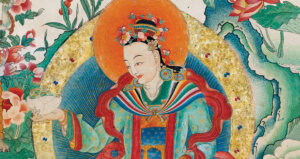
Yeshe Tsogyal: A Guide for Readers to the Dakini Princess

The Life and Visions of Yeshe Tsogyal
See Also: Dudjom Tersar | Longchen Nyingtig | Namcho & Palyul
___________________
Guru Rinpoche | Mandarava | Rongzompa | Longchenpa | Jigme Lingpa | Patrul Rinpoche |
Sera Khandro | Mipham Rinpoche | Dilgo Khyentse | Dudjom Rinpoche
The first Tibetan ever to attain complete enlightenment was in all probability the woman Yeshe Tsogyal, closest disciple of Padmasambhava, the master who introduced the Buddhist teachings to Tibet in the eighth century. The first three books below are not just biographies—and very different from each other both in emphasis as well as some of the events accounted for—but inspiring examples of how Buddha’s teaching may be practiced. Although these texts are of great antiquity, they nevertheless expresses a tradition that is still alive today and is an archetypal description of the teacher-disciple relationship. Yeshe Tsogyal follows the complete Buddhist path, including the Dzogchen teachings, and herself becomes a Guru of great power and wisdom. Passages of profound teachings are offset by episodes of exploit and adventure, spiritual endeavor, court intrigue, and personal encounter. Hers is a dramatic story, full of beauty and song, and offers an intimate glimpse of Tsogyal’s feelings, aspirations, hardships, and triumphs.
Biographical Accounts
Paperback | Ebook
$24.95 - Paperback
Lady of the Lotus-Born: The Life and Enlightenment of Yeshe Tsogyal
By Yeshe Tsogyal, Namkhai Nyingpo, and Gyalwa Changchub
Foreword by Jigme Khyentse Rinpoche
Translated by The Padmakara Translation Group
Lady of the Lotus-Born is a terma, or Dharma Treasure, written and concealed in the eighth century for future generations by the accomplished masters Namkhai Nyingpo and Gyalwa Changchub, the disciples of Padmasambhava and Yeshe Tsogyal. The text was discovered nearly a thousand years later in the seventeenth century by the Tertön (Dharma Treasure finder) Taksham Samten Lingpa, who, by interpreting the symbolic script of the dakinis (reproduced at the beginning of each chapter), revealed the text in its entirety as it has been handed down to us.
Paperback | Ebook
$24.95 - Paperback
The Life and Visions of Yeshe Tsogyal: The Autobiography of the Great Wisdom Queen
By Yeshe Tsogyal, rediscovered by Drime Kunga and Jamyang Khyentse Wangpo, and translated by Chonyi Drolma
Foreword by Dzongsar Khyentse Rinpoche
The many layers of the heroic life of Yeshé Tsogyal, Tibet’s best-known dakini and female master, are revealed in this inspiring work. Translated here for the first time, this terma, or “hidden treasure,” presents an outer narrative of her birth, family, and struggles in a traditional male-dominated society; an inner account of her meetings with the great master Padmasambhava; and a secret chronicle of her retreat at Chimpu and her visionary journey to Oddiyana. This accomplished translation is enriched by the refreshing insights of six contemporary scholars and teachers of Tibetan Buddhism, making this invaluable guide to the life of Yeshé Tsogyal a treasure for practitioners, scholars, and anyone intent on the possibility of awakening.
You can read a piece from the book Judith Simmer-Brown wrote here.
Sky Dancer: The Secret Life and Songs of the Lady Yeshe Tsogyel
By Taksham Nuden Dorje, translated by Keith Dowman
Foreword by Thinley Norbu Rinpoche
Another terma text is this extraordinary work, discovered by Taksham Nuden Dorje n the seventeenth century.
An Thinley Norbu Rinpoche says in the foreword,
Those who read the biography of the supreme tantric master, Padma Sambhava, and his Consort, Yeshe Tsogyal, have the chance to identify with them, and those who cultivate the inner wisdom Dakini:, the root Dakini:, progress towards becoming the supreme Sky Dancer, incomprehensible feminine wisdom,
the lover without motive.
and
In the dharmakaya's stainless space Yeshe Tsogyel is Kuntuzangmo, infinite and noble femininity itself. These names and qualities are no more than
indications of the nature of the dharmakaya which can never be contained in, or identified by, concepts. Sambhogakaya is the
glowing awareness of the dharmakaya, where the Five Buddhas and their Consorts appear as unobstructed luminous space-form. As the feminine aspect in the sambhogakaya, Yeshe Tsogyal is the Five Wisdom-Consorts.
Books Related to Khandro Yeshe Tsogyal
Paperback | Ebook
$24.95 - Paperback
by Nyoshul Khen Rinpoche
Translated and introduced by David Christiansen
Nyoshul Khen Rinpoche was one of the most important teachers of the 20th century - an important teacher to some of the best living teachers. In the pages of this book, Yeshe Tsogyal appears throughout. Here is one section:
At present we are practicing the meditation deity in the form of the dakini, from the terma treasure teachings of the second Dudjom Rinpoche, Jigdral Yeshe Dorje (1904–87). It is a teaching that has been revealed specifically for the benefit of beings in this dark age. This practice stems from the compassion of the three jewels and the blessings and aspirations of the buddhas and is an actual method to accomplish Guru Padmasambhava’s consort Yeshe Tsogyal. The dakini Yeshe Tsogyal is the nirmanakaya emanation of dharmadhatu Samantabhadri, the consort of the dharmakaya buddha Samantabhadra, who is the female aspect of the ultimate deity (don gyi lha).
In order to help us realize this state for ourselves, through the power, blessings, and aspirations of Buddha Samantabhadra and consort, the dakini Yeshe Tsogyal arises as their actual manifestation and is born into this world. Yeshe Tsogyal was blessed and taught by Guru Padmasambhava and as part of her various enlightened activities, she wrote down and transmitted a method to follow her and accomplish the essence of her awareness wisdom (rig pa’i ye shes kyi ngo bo). Thus we have the practice of Yeshe Tsogyal as a yidam or meditation deity.
Paperback | Ebook
$28.95 - Paperback
A Cascading Waterfall of Nectar
To call Cascading Waterfall a book on the preliminary practices is a bit like calling the Mt. Everest a hill. Coming from the vast wisdom mind of Longchenpa's emanation in our age, it is an indespensible guide to the path. And Yeshe Tsogyal, who Rinpoche describes as Kuntuzangmo appearing in form, appears throughout.
Rinpoche includes a translation of Mipham Rinpoche's prayer to Yeshe Tsogyal, The Longing Melody of Faith.
And the second part of the book is a commentary on the meaning of “The Continuously Blossoming Rosary of the Lotus Assembly Palace” called The Light Rays of the Youthful Sun and Rinpoche offers us many teachings on the Great Exaltation Queen Yeshe Tsogyal who features in the prayer.
Paperback | Ebook
$24.95 - Paperback
Inseparable across Lifetimes: The Lives and Love Letters of the Tibetan Visionaries Namtrul Rinpoche and Khandro Tāre Lhamo
By Namtrul Jigme Phuntsok and Khandro Tare Lhamo
Introduced and translated by Holly Gayley
Namtrul Jigme Phuntsok and Khandro Tare Lhamo were an extraordinary 20th century terton visionaries as the translations of love letters. Tare Lhamo is widely considered an emanation of Yeshe Tsogyal and this connection appears throughout Gayley's introduction as well as the letters themselves.
The letters are poetic, affectionate, and prophetic, articulating a hopeful vision of renewal that drew on their past lives together and led to their twenty-year partnership. This couple played a significant role in restoring Buddhism in the region of Golok once China’s revolutionary fervor gave way to reform.
Paperback | Ebook
$34.95 - Paperback
Light of Fearless Indestructible Wisdom: The Life and Legacy of His Holiness Dudjom Rinpoche
By Khenpo Tsewang Dongyal
This biography of Dudjom Rinpoche references Yeshe Tsogyal throughout. It includes the Seventh Heap of Lightbeams which a brief explanation of Kyabje Rinpoche’s enthronement as a great tertön and regent of Guru Padmasambhava and of how Guru Rinpoche and wisdom dakini Yeshe Tsogyal entrusted him with terma. Kenpo Tsewang also shares how in some terms teachings terma teachings it says that Guru Padmasambhava and Yeshe Tsogyal reincarnated together in the form of His Holiness Dudjom Rinpoche, so that he was their actual presence—only the body was different.
Paperback | Ebook
$39.95 - Paperback
This is a classic of scholarship on the Dakini principle from the point of view of a practitioner. Yeshe Togyal is discussed and referenced throughout. Here is a sample:
As for her inner dimension, Yeshe Tsogyal was remarkable because she was not merely a mortal; in her dynamic nature she was a tantric Buddhist meditational deity. She is called Sarasvati (Yangchenma), the great female bodhisattva of learning, culture, and music, the peaceful consort of Manjusri, who carries a lute that serves as her symbol. Sarasvati is also called Vakisvari, (Ngawang Lhamo) or ‘‘lady of speech’’ for her connection with seed syllables, music, utterance, and poetry. She is the dakini of the mirrorlike wisdom, and the ‘‘white-cloaked lady’’ (Ko Karmo) who is dakini of inner heat in the yogic practice of tummo. It is said that Yeshe Tsogyal was Sarasvati in her previous life.
Yeshe Tsogyal in her visionary dimension was the radiant White Tara (Drolma Karmo) the savior who, with her compassionate seven eyes, attends to the health and welfare of beings in all quarters. In another manifestation, she was Vajrayogini or Vajravarahi, who are two aspects of the most important dakini in the Tibetan tantric system. Vajrayogini is a semiwrathful deity, depicted as red and dancing, wearing bone ornaments; she is the most expressive of the qualities of wakefulness, the personification
of the widsom-mind itself. In her alternate identity as Vajravarahi she is the ‘‘Vajra Sow,’’ the manifestation of the nonconceptual quality of the mind, who severs thought with her hooked knife
Additional Resources

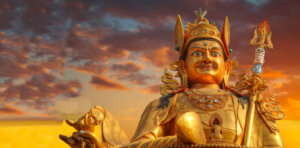
Padmasambhava: A Reader's Guide to Guru Rinpoche

Some Nyingma Lineages: Dudjom Tersar | Longchen Nyingtig | Namcho & Palyul
Guides to Other Important Nyingma Figures:
Rongzompa | Longchenpa | Jigme Lingpa | Patrul Rinpoche |
Sera Khandro | Mipham Rinpoche | Dilgo Khyentse | Dudjom Rinpoche
We begin this Reader’s Guide to Guru Rinpoche, also known as Padmasambhava, with some trepidation, as it is a delicate task to try and write a short article on a figure so central to the Tibetan Buddhist tradition and so revered by many, whose life and legacy are so rich. The attempt feels deficient, yet there are some great resources for practitioners that are important to highlight. Also, so many termas, or rediscovered treasures are in fact from Guru Rinpoche, that excluding them feels a bit odd but to include them would be overwhelming. In fact, there are few books in the Nyingma tradition where Guru Rinpoche is not a central figure.
This guide presumes readers already have a basic understanding of Guru Rinpoche, and how he is an historical figure and saint, considered a Buddha as well a focus of meditation in the form of the Guru, and the source of an incredible corpus of teachings.
Biographical Accounts
Hardcover | Ebook
$28.95 - Hardcover
Guru Rinpoche: His Life and Times
Introduced and translated by Ngawang Zangpo
The first half of the book includes six chapters where Ngawang Zangpo lays out an important framework for understanding Guru Rinpoche's impact and the mileiu he entered on his arrival to Tibet. These include:
- Buddhism, History, and the Truth
- Buddhist History after the Buddha
- Tibet and Asia on the Eve of Guru Rinpoché’s Arrival
- India in Guru Rinpoché’s Era
- Guru Rinpoché Now—in Print
- Timeless Guru Rinpoché and Wisdom Bridges to the Present
There are many account of Guru Rinpoche's life, and the second half of the book is collection of vitally important accounts about his life is an invaluable resource.
- A Biography of Guru Rinpoche by Jamgon Kongtrul
- The Immaculate White Lotus by Dorje Tso
- The Indian Version of the Life of Guru Rinpoche by Taranata
- The Bön Version of the Life of Guru Rinpoche by Jamyong Kyentse Wongpo
- Supplications to Guru Rinpoche in Seven Chapters by Guru Rinpoche
- Visualizations to Accompany the Supplications by Jamgon Kongtrul
Paperback | Ebook
$21.95 - Paperback
Crazy Wisdom
This fascinating book examines the life of Padmasambhava to illustrate the principle of "crazy wisdom". From this profound point of view, spiritual practice does not provide comfortable answers to pain or confusion. On the contrary, painful emotions can be appreciated as a challenging opportunity for new discovery. In particular, the author discusses meditation as a practical way to uncover one's own innate wisdom.
He uses the model of the Eight Names (or aspects of manifestations) of Guru Rinpoche, and goes through each in detail.
Trungpa Rinpoche makes a strong case that those in the west need Padmasabhava as badly as the savage and uncultured Tibetans of the eighth century.
Hardbound | Ebook
$21.95 - Hardcover
The Magical Life of the Lotus-Born
By Sherab Chodzin Kohn, illustrated by Thinley Dorji
Explore a fresh telling of the inspiring, mysterious, and magical life of the great master Padmasambhava—the Lotus-Born—who planted the seed of Buddhism in Tibet that is still blossoming today, beautifully illustrated for ages 10+.
Here, his magical life story is outlined in colorful and captivating detail, offering young readers a rare glimpse into his fierce adventures and battles that transformed Tibet, a land of malevolent spirits and wild folk, into a fertile ground for Buddhism. The rich and vibrant spiritual tradition that resulted in Tibet has thrived for over one thousand years. This timeless tale is sure to capture the imagination of future generations, just as the oral, theatrical, and written accounts of it have in the Himalayas for centuries.
The Seven Line Prayer
The Seven-Line prayer to Guru Rinpoche is one of the most ubiquitous and important prayers, performed across lineages and in particular the Nyingma tradition who commence nearly every practice with it and for which there are dedicated sadhanas based on it. Below are several of the books about it.
Visit our page dedicated to resources about the famed Seven Line Prayer
$18.95 - Paperback
Works and Practices Related to Padmasambhava
Hardcover | Ebook
$22.95 - Hardcover
A Garland of Views: A Guide to View, Meditation, and Result in the Nine Vehicles
by Padmasambhava and Mipham Rinpoche
A Garland of Views presents both a concise commentary by the eighth-century Indian Buddhist master Padmasambhava on a chapter from the Guhyagarbha Tantra on the different Buddhist and non-Buddhist philosophical views, including the Great Perfection (Dzogchen), and an explicative commentary on Padmasambhava’s text by the nineteenth-century scholar Jamgön Mipham (1846–1912).
Padmasambhava’s text is a core text of the Nyingma tradition because it provides the basis for the system of nine vehicles (three sutra vehicles and six tantra vehicles) that subsequently became the accepted way of classifying the different Buddhist paths in the Nyingma tradition.
Padmakara Translation Group translator Stephen Gethin on Garland of Views
Audiobook Sample
Audiobook (read by British actor Simon Callow)
$24.99 - Digital Audio
Paperback | Ebook
$21.95 - Paperback
A Practice of Padmasambhava: Essential Instructions on the Path to Awakening
A Practice of Padmasambhava presents two practical and compelling works related to a visualization and mantra practice of Padmasambhava. This practice is based on the most important revelation of the renowned nineteenth-century treasure revealer Chokgyur Lingpa, Accomplishing the Guru's Mind: Dispeller of All Obstacles. These two works give an introduction to the preliminary trainings, outline the primary elements of visualization practice and mantra recitation, and supply a detailed explanation of the practice of Padmasambhava's wisdom aspect, Guru Vadisimha. Through practical step-by-step instructions on this deity, the reader is guided into the general world of tantric practice common to all of Tibetan Buddhism.
Paperback | Ebook
$29.95 - Paperback
The Copper-Colored Mountain: Jigme Lingpa on Rebirth in Padmasambhava’s Pure Land
By Jigme Lingpa, George Halkias, and Christina Partsalaki
The Copper-Colored Mountain is the pure land of Padmasambhava, the Indian master who brought Buddhism to Tibet. One way in which Buddhist practitioners may be reborn in this pure land is by making aspiration prayers. This work includes a translation of one of the most famous of these aspiration prayers, composed by Jigme Lingpa, and the authors’ verse-by-verse analysis of it. Drawing on both traditional commentaries and contemporary scholarly texts, the authors show how Jigme Lingpa encodes many features of Tibetan Buddhist tantric practice in these verses, and thus they provide a feast of meaning for tantric practitioners.
Paperback | Ebook
$18.95 - Paperback
Secret Teachings of Padmasambhava: Essential Instructions on Mastering the Energies of Life
By Padmasambhava, translated by Kennard Lipman
Translations of several short but important texts on Innermost Essence of the Dakini (Khadro Nyingtig).
These two teachings of Padmasambhava, The Fivefold Essential Instruction and A Section of Hidden Instruction, the Innermost Essence of the Dakini, are certainly of interest to the serious practitioner of the Vajrayana. They not only present well-known tantric teachings of channels (tsa), energy (lung), and potencies (tigle) in a clear and practical way, but they also offer us a unique Dzogchen perspective on them. In addition, they give us a glimpse into life on retreat with two of the greatest masters of Tibetan Buddhism, Padmasambhava and Yeshe Tsogyal.
Paperback | Ebook
$16.95 - Paperback
The Tibetan Book of the Dead: The Great Liberation through Hearing in the Bardo
By Padmasambhava, Karma Lingpa. Translated and introduced by Chögyam Trungpa and Francesca Freemantle
Written by Guru Rinpoche, rediscovered as a terma by Karma Lingpa, and translated and introduced by Chögyam Trungpa and Francesca Freemantle, this work is traditionally read aloud to the dying to help them attain liberation—death and rebirth are seen as a process that provides an opportunity to recognize the true nature of mind. This translation of The Tibetan Book of the Dead emphasizes the practical advice that the book offers to the living. The insightful commentary by Chögyam Trungpa, written in clear, concise language, explains what the text teaches us about human psychology.
Paperback | Ebook
$24.95 - Paperback
Self-Liberation through Seeing with Naked Awareness
By Padmasambhava, Karma Lingpa, and John Myrdhin Reynolds
Teaching the attainment of Buddhahood in a single lifetime, this text was written and concealed by Guru Padmasambhava in the eighth century and rediscovered six centuries later by Karma Lingpa. The commentary by the translator is based on the oral teachings of Namkhai Norbu Rinpoche and Lama Tharchin Rinpoche.
Paperback | Ebook
$29.95 - Paperback
Gesar: Tantric Practices of the Tibetan Warrior King
By Mipham Rinpoche, Orgyen Tobgyal Rinpoche, Chogyam Trungpa. Introduced and translated by Gyurme Avertin
The King, protector, and deity Gesar of Ling is intimately connected with Guru Rinpoche. In his Garland of Jewels, Mipham Rinpoche explains that "The lords of the three families are Manjushri, Avalokiteshvara, and Vajrapani; their magical manifestation is Guru Rinpoche; and his emanation is Gesar Norbu Dradul. As Gesar prayers often specify, the 'emanation of Padma and the three families, Great Lion Gesar." This work explains the connection in several sections.
Orgyen Tobgyal relates:
Basically, the deity Gesar doesn’t exist; he is simply Guru Rinpoche in the form of a drala—a form he takes to help raise the windhorse of sentient beings. Guru Rinpoche is also the embodiment of the enlightened qualities of all the buddhas. His enlightened activities are unfathomable, but a small fraction took place in the Land of Ling, 'the awe-inspiring Ma valley' in Kham—this is what it’s called in all the stories written about Gesar.
Books on Some of Guru Rinpoche's Contemporaries
$34.95 - Paperback
By: Gyalwa Changchub & Namkhai Nyingpo & Padmakara Translation Group
The Life and Visions of Yeshe Tsogyal
$24.95 - Paperback
By: Chonyi Drolma & Dzongsar Jamyang Khyentse & Drime Kunga & Yeshe Tsogyal
We also encourage readers to explore the excellent series of books on Padmasambhava, Following in Your Footsteps, published by Rangjung Yeshe Publications.
Additional Resources

SNOW LION NEWSLETTER ARCHIVE
An Interview with Lama Tharchin Rinpoche
The following is from the Snow Lion Newsletter, Winter Supplement 1995
Snow Lion: Rinpoche, can you tell us something about your activities here in the West?
Lama Tharchin Rinpoche: Last time I saw my root teacher, His Holiness Dudjom Rinpoche, his final instructions were for me to take care of the doctrine by teaching and establishing the Dharma. He told me that since I have been educated in Dharma and have gained experience in retreat, it was now time to share what I have learned with others. His Holiness Dudjom Rinpoche's son, Dorje Chang Kyabje Dungse Thinley Norbu Rinpoche, advised me to stay and teach in America where the doctrine has not been previously established.
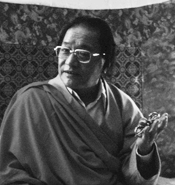
Kyabje Dudjom Rinpoche
When I reflect on my teacher's request and what I want to do with the rest of my life, and I think about what I can give to America and the West, I feel the most profound gift I could possibly give would be the gift of inner peace. We are so wealthy materially, yet we lack the ability to find true and lasting happiness. Each of us has an inherent enlightened Buddha-nature and the ability to find inner peace and contentment. The way to find and reveal the inconceivable qualities within each of us is through the path and techniques of Dharma.
This is the way we can remove the mental suffering and delusion that exists within the samsaric cycling of existence. The unbroken lineage of the Vajrayana teachings can only be held and continued for future generations through education and practice. Education requires the establishment of a college. Practice requires people to do retreat in all forms, including the traditional three-year retreat. Due to my teacher's encouragement, my life goal is to establish these two vehicles for rooting the essence of the Vajrayana teachings in the West.
Two and a half years ago we established the three-year retreat. There are currently eleven people in retreat. We are also in the process of translating a complete treasury of sutra and tantra, a thirteen volume text called the Do Gyud Dzod. [Note: First volume published in 2015 as The Complete Nyingma Tradition Books 1-10] Only one copy of these volumes exists in Tibet, and we have now made a copy and brought it here. When this translation project is complete and if impermanence doesn't come too soon, I would like to establish a college under the direction of Lama Gyaltsen Rinpoche from Vajrayana East in Nepal and Tulku Thubten Rinpoche [Anam Thubten], who is a resident lama at Pema Osel Ling. Since 1986 I have been living in the Santa Cruz area where I have been directing Vajrayana Foundation and Pema Osel Ling retreat and conference center. I feel very pleased that so much progress has been made since I came to the West.
In addition to establishing the three-year retreat and beginning a college, we have also created the Institute for the Preservation of Tibetan Sacred Art. Our plan is to create symbolic supports for bringing enlightened energy to the earth in the form of stupas, statues, libraries and temples, which increase the wisdom and compassion of all sentient beings. So far at Pema Osel Ling, we have finished sculpting a large statue of Guru Rinpoche, which is now being painted and gilded, and an elaborate and permanent sand mandala of Guru Rinpoche's pure' land.
My overall goal is to continue to establish the pure and unbroken Dudjom Tersar lineage in the West. Wherever one can establish a pure lineage, then whoever has the desire to hold that lineage will be able to. This preserves that lineage for the benefit of all beings, now and in the future. Today Tibetan culture and doctrine is very fragile. Some of the lineages of Vajrayana Buddhism have become very thin and are in danger of being lost. My intention is to train Westerners to become lamas who are both educated and experienced practitioners. In this way, the Dudjom Tersar lineage will be strengthened. As Westerners begin to teach, the Dharma can become integrated into this culture without losing the purity of the lineage. Even though I cannot accomplish all of these goals in my lifetime, I hope that others will complete what I have begun.
Due to his great compassion and wisdom, and our extremely good fortune, Dungse Thinley Norbu Rinpoche has granted our request and has agreed to give next summer the entire cycle of Dudjom Lingpa and His Holiness Dudjom Rinpoche's empowerments, transmissions and teachings, which is the Dudjom Tersar lineage. Good fortune of this kind is almost impossible to find, especially for a humble Dharma center like ours. This will be a major event for the Nyingma lineage and Vajrayana tradition.
SL: Please tell us about your experiences with Dudjom Rinpoche.
LTR: Actually, my father sent me to study and train with His Holiness Dudjom Rinpoche in 1943 when I was eight years old. I moved to his monastery, Lama Ling, in Gongpo. My whole childhood was devoted to education, then later I went into retreat.
SL: How long did you stay in retreat with His Holiness?
LTR: First, I spent five years by myself in retreat, then I did a three-year retreat with a group at His Holiness's place. I practiced and received teachings from Dudjom Rinpoche until I escaped to India in 1960. I then traveled with him until 1964 when he established a center in Orissa where I stayed until 1975. My whole life was devoted to serving him and his centers.
SL: Can you tell us something about your relationship with his son Dungse Thinley Norbu Rinpoche?
LTR: We grew up together in Tibet. Later, as I became educated and finished retreat, my understanding improved and I realized how truly amazing he is. I thought that no one in the world could write like Dudjom Rinpoche, and then I read Dungse Thinley Norbu Rinpoche's books. I couldn't believe how sublime his work is, just like his father's. I feel that their qualities are inseparable, and that he is exactly the same as his father.
I received Dzogchen teachings and empowerments from him and became his student Along with His Holiness Dudjom Rinpoche, Lama Sherab Rinpoche and Chatral Rinpoche, I consider Dungse Thinley Norbu Rinpoche to be my root guru.
Dungse Thinley Norbu Rinpoche is an emanation of the great Mahasiddha Longchenpa, whose later emanation was Jigme Lingpa. In his previous lifetime, he was the son of Dudjom Lingpa. Now I can see that Longchenpa, Guru Rinpoche, Dudjom Rinpoche, and Dungse Rinpoche are exactly the same.
SL: Do you think it is important for people to attend the Dudjom Tersar transmissions in July?
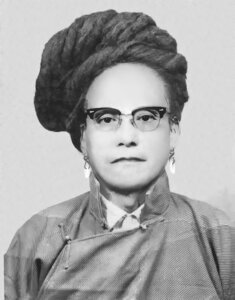
Lama Sherab Rinpoche, Lama Tharchin's uncle
LTR: Yes, absolutely. This is a once-in-a-lifetime opportunity. Dungse Thinley Norbu Rinpoche never gives this type of advanced teaching and empowerments to the public. He is a totally hidden and secret Lama. Due to his incredible compassion and kindness he is willing to pass this lineage to us.
I was recently in Nepal, and when I told people of his intentions, they couldn't believe it. They said that they normally never even get a chance to see him. They were so shocked to hear that he would transmit the whole cycle of empowerments and teachings. This is our incredible good fortune. Since this is such a rare opportunity, I want to let everyone know about this extremely auspicious occasion. Since His Holiness Dudjom Rinpoche passed away, this lineage has already grown weaker. Now we have a wonderful opportunity to make it strong again.
SL: Many people here have very busy lives and will not be able to attend the entire four weeks. Would it be acceptable to attend part of the time?
LTR: Yes, of course, whatever you can do is wonderful. I hope that many of our Dharma friends will be able to come.
***
For further information on the Dudjom Tersar empowerments, write to Dudjom Empowerments, 2013 Eureka Canyon Road, Corralitos, CA 95076, or call 408-724- 2752. The Venerabla Dzogchen master of Vajrayana Buddhism. He is the tenth lineage holder of the Repkong Ngakpas or yogis, which was the largest community of non-monastic practitioners in Tibet. He is loved not onlyfor his inspiring teachings of Buddhist philosophy and meditation, but also for his accomplishments as a master artist. *
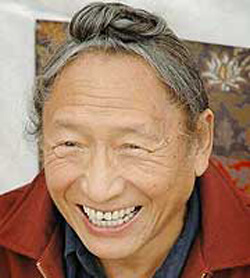
The Complete Nyingma Tradition from Sutra to Tantra, Books 1 to 10
$49.95 - Hardcover
The Complete Nyingma Tradition from Sutra to Tantra, Books 15 to 17
$59.00 - Hardcover
This includes a foreword by Lama Tharchin Rinpoche
Books Related to the Dudjom Tersar
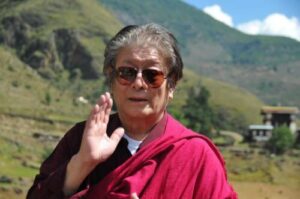
The Passing of Thinley Norbu Rinpoche
| The following article is from the Winter, 2012 issue of the Snow Lion Newsletter and is for historical reference only. You can see this in context of the original newsletter here. |
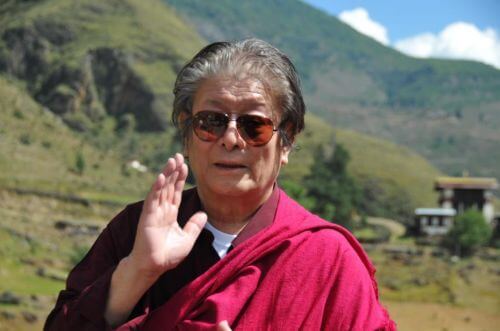
"For many years he taught the Buddha dharma in America as well as throughout the Himalayan area, introducing many students to Dzogchen through his incomparable writings," said Ayang Rinpoche in an announcement to the Sangha.
THINLEY NORBU RINPOCHE TITLES
Lama Tharchin Rinpoche Establishes Traditional Dharma College in America
Lama Tharchin Rinpoche Establishes Traditional Dharma College in America
| The following article is from the Summer, 1997 issue of the Snow Lion Newsletter and is for historical reference only. You can see this in context of the original newsletter here. |
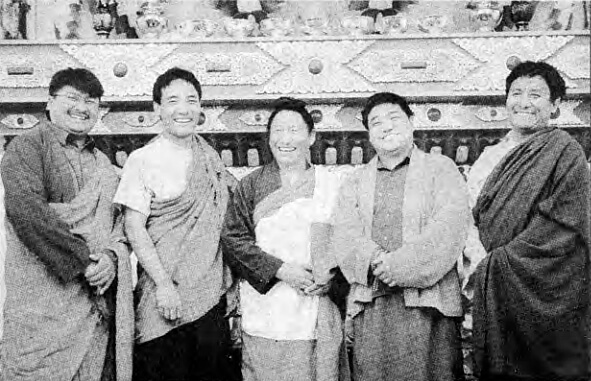
Angyur, Anam Thubten, Lama Tharchin, Orgyen Chowang, Lama Tsering Gyaltsen
Lama Tharchin Rinpoche, a Dzogchen master of Vajrayana Buddhism, is the tenth lineage holder of the Repkong Ngakpasthe largest non-monastic communtiy of practitioners in Tibet. His inspiring teachings of Buddhist philosophy and meditation are complemented by his artistry and knowledge of Tibetan monastic arts.
In 1987, at the suggestion of His Holiness Dudjom Rinpoche, Lama Tharchin Rinpoche founded the Vajrayana Foundation to promote the tradition and practice of the Nyingma lineage of Tibetan Buddhism. The Foundation has centers in Nepal, Europe and the USA, including Hawaii, Los Angeles and its main retreat center, Pema Osel Ling, in the Santa Cruz Mountains of California. This center is the site of the Vajrayana Foundation College of Buddhist Studies which recently completed its first session. The faculty includes Tulku Thubten Rinpoche, Orgyen Thinley Rinpoche, and Lama Ngawang in addition to Lama Tharchin Rinpoche.
Lama Tharchin would like to establish the dharma here in three ways corresponding to the outer, inner and secret levels needed for forming a complete foundation to support, the entire tradition of the dharma. The outer level is established through the creation of ritual art and architecture such as monasteries, statues, and stupas, and corresponds to the body, speech and mind of the Buddha. These symbolic objects are a support to all those who come into contact with them. Shedra is the inner level and is the vehicle for the transmission of knowledge and the understanding of dharma. The secret level is the actual practice of dharma from the preliminary to the most advanced practices.
Shedra is a way to preserve the teachings and traditions of this lineage and to provide an opportunity for students to learn the entire Buddhist doctrine. The first three month-session in March on the Ngondro Commentary by Dungse Thinley Norbu Rinpoche and the Do Gyud Zod (Jewel Treasury of Sutra & Tantra) has just been finished.
There are two paths necessary to preserve the Buddhist doctrine. With the shedra and drupta (three-year retreat) well established, both of these paths are now available to students who wish to accomplish the entire range of Buddhist study and practice. These complementary paths, taken together, can lead us quickly to realization.
The next session of shedra at Pema Osel Ling will run from September 23 to November 23, 1997. Future curriculum will include: Tibetan language, astrology, medicine, art, Marjushri practice and more. Enrollment can be for the entire session or by the day. For further information, please contact Pema Osel Ling, 408-761-6266, or fax 408-761-6284, or email: [email protected]
The Do Gyud Dzog or Complete Nyingma Tradition

Thinley Norbu To Lead Dudjom Empowerments
| The following article is from the Winter, 1995 issue of the Snow Lion Newsletter and is for historical reference only. You can see this in context of the original newsletter here. |
INTERVIEW WITH LAMA THARCHIN RINPOCHE
Rinpoche, can you tell us something about your activities here in the West?

When I reflect on my teacher's request and what I want to do with the rest of my life, and I think about what I can give to America and the West, I feel the most profound gift I could possibly give would be the gift of inner peace. We are so wealthy materially, yet we lack the ability to find true and lasting happiness. Each of us has an inherent enlightened Buddhanature and the ability to find inner peace and contentment. The way to find and reveal the inconceivable qualities within each of us is through the path and techniques of Dharma.
ATTENTION: Please note our new editorial telephone number for Sidney Piburn, Susan Kyser or David Patt277-2168. Our fax number 607-273-8508 is now a dedicated fax line to serve you better. You can fax us 24 hours a day on this number.
This is the way we can remove the mental suffering and delusion that exists within the samsaric cycling of existence.
The unbroken lineage of the Vajrayana teachings can only be held and continued for future generations through education and practice. Education requires the establishment of a college. Practice requires people to do retreat in all forms, including the traditional three-year retreat. Due to my teacher's encouragement, my life goal is to establish these two vehicles for rooting the essence of the Vajrayana teachings in the West.
Two and a half years ago we established the three-year retreat. There are currently eleven people in retreat. We are also in the process of translating a complete treasury of sutra and tantra, a thirteen-volume text called the Do Gyud Dzod. Only one copy of these volumes exists in Tibet, and we have now made a copy and brought it here. When this translation project is complete and if impermanence doesn't come too soon, I would like to establish a college under the direction of Lama Gyaltsen Rinpoche from Vajrayana East in Nepal and Tulku Thubten Rinpoche, who is a resident lama at Pema Osel Ling. Since 19861 have been living in the Santa Cruz area where I have been directing Vajrayana Foundation and Pema Osel Ling retreat and conference center. I feel very pleased that so much progress has been made since I came to the West.
In addition to establishing the three-year retreat and beginning a college, we have also created the Institute for the Preservation of Tibetan Sacred Art. Our plan is to create symbolic supports for bringing enlightened energy to the earth in the form of stupas, statues, libraries and temples, which increase the wisdom and compassion of all sentient beings. So far at Pema Osel Ling, we have finished sculpting a large statue of Guru Rinpoche, which is now being painted and gilded, and an elaborate and permanent sand mandala of Guru Rinpoche's pure ' land.
My overall goal is to continue to establish the pure and unbroken Ducljom Tersar lineage in the West. Wherever one can establish a pure lineage, then whoever has the desire to hold that lineage will be able to. This preserves that lineage for the benefit of all beings, now and in the future. Today Tibetan culture and doctrine is very fragile. Some of the lineages of Vajrayana Buddhism have become very thin and are in danger of being lost. My intention is to train Westerners to become lamas who are both educated and experienced practitioners. In this way, the Dudjom Tersar lineage will be strengthened. As Westerners begin to teach, the Dharma can become integrated into this culture without losing the purity of the lineage. Even though I cannot accomplish all of these goals in my lifetime, I hope that others will complete what I have begun.
Due to his great compassion and wisdom, and our extremely good fortune, Dungse Thinley Norbu Rinpoche has granted our request and has agreed to give next summer the entire cycle of Dudjom Lingpa and His Holiness Dudjom Rinpoche's empowerments, transmissions and teachings, which is the Dudjom Tersar lineage. Good fortune of this kind is almost impossible to find, especially for a humble Dharma center like ours. This will be a imyor event for the Nyingma lineage and Vajrayana tradition.
Please tell us about your experiences with Dudjom Rinpoche.
Actually, my father sent me to study and train with His Holiness Dudjom Rinpoche in 1943 when I was eight years old. I moved to his monastery, Lama Ling, in Gongpo. My whole childhood was devoted to education, then later I went into retreat.
How long did you stay in retreat with His Holiness?
First, I spent five years by myself in retreat, then I did a three-year retreat with a group at His Holiness's place. I practiced and received teachings from Dudjom Rinpoche until I escaped to India in 1960. I then traveled with him until 1964 when he established a center in Orissa where I stayed until 1975. My whole life was devoted to serving him and his centers.
Can you tell us something about your relationship with his son Dungse Thinley Norbu Rinpoche?
We grew up together in Tibet. Later, as I became educated and finished retreat, my understanding improved and I realized how truly amazing he is. I thought that no one in the world could write like Dudjom Rinpoche, and then I read Dungse Thinley Norbu Rinpoche's books. I couldn't believe how sublime his work is, just like his father's. I feel that their qualities are inseparable, and that he is exactly the same as his father. I received Dzogchen teachings and empowerments from him and became his student. Along with His Holiness Dudjom Rinpoche, Lama Sherab Rinpoche and Chatral Rinpoche, I consider Dungse Thinley Norbu Rinpoche to be my root guru. Dungse Thinley Norbu Rinpoche is an emanation of the great Mahasiddha Longchenpa, whose later emanation was Jigme Lingpa. In his previous lifetime, he was the son of Dudjom Lingpa. i Now I can see that Longchenpa, Guru Rinpoche, Dudjom Rinpoche, and Dungse Rinpoche are exactly the same.
Do you think it is important for people to attend the Dudjom Tersar transmissions in July?
Yes, absolutely. This is a once-in-a-lifetime opportunity. Dungse Thinley Norbu Rinpoche never gives this type of advanced teaching and empowerments to the public. He is a totally hidden and secret Lama. Due to his incredible compassion and kindness he is willing to pass this lineage to us.
I was recently in Nepal, and when I told people of his intentions, they couldn't believe it. They said that they normally never even get a chance to see him. They were so shocked to hear that he would transmit the whole cycle of empowerments and teachings. This is our incredible good fortune. Since this is such a rare opportunity, I want to let everyone know about this extremely auspicious occasion. Since His Holiness Dudjom Rinpoche passed away, this lineage has already grown weaker. Now we have a wonderful opportunity to make it strong again.
Many people here have very busy lives and will not be able to attend the entire four weeks. Would it be acceptable to attend part of the time?
Yes, of course, whatever you can do is wonderful. I hope that many of our Dharma friends will be able to come.
For further information on the Dudjom Tersar empowerments, write to Dudjom Empowerments, 2013 Eureka Canyon Road, Corralitos, CA 95076, or call 408-7242752.
The Venerable Lama Tharchin Rinpoche is a Dzogchen master of Vajrayana Buddhism. He is the tenth lineage holder of the Repkong Ngakpas or yogis, which was the largest community of non-monastic practitioners in Tibet. He is loved not only for his inspiring teachings of Buddhist philosophy and meditation, but also for his accomplishments as a master artist.

